
AeroGenie: Su copiloto inteligente.
Pregunta cualquier cosa. Analiza todo. Actúa al instante.
Tendencias
Categories
Noticias de aviación. Impulsadas por IA.
Verificado por ePlane AI
La IA verifica cada historia antes de publicarla.
Últimas noticias
Noticias de tendencia
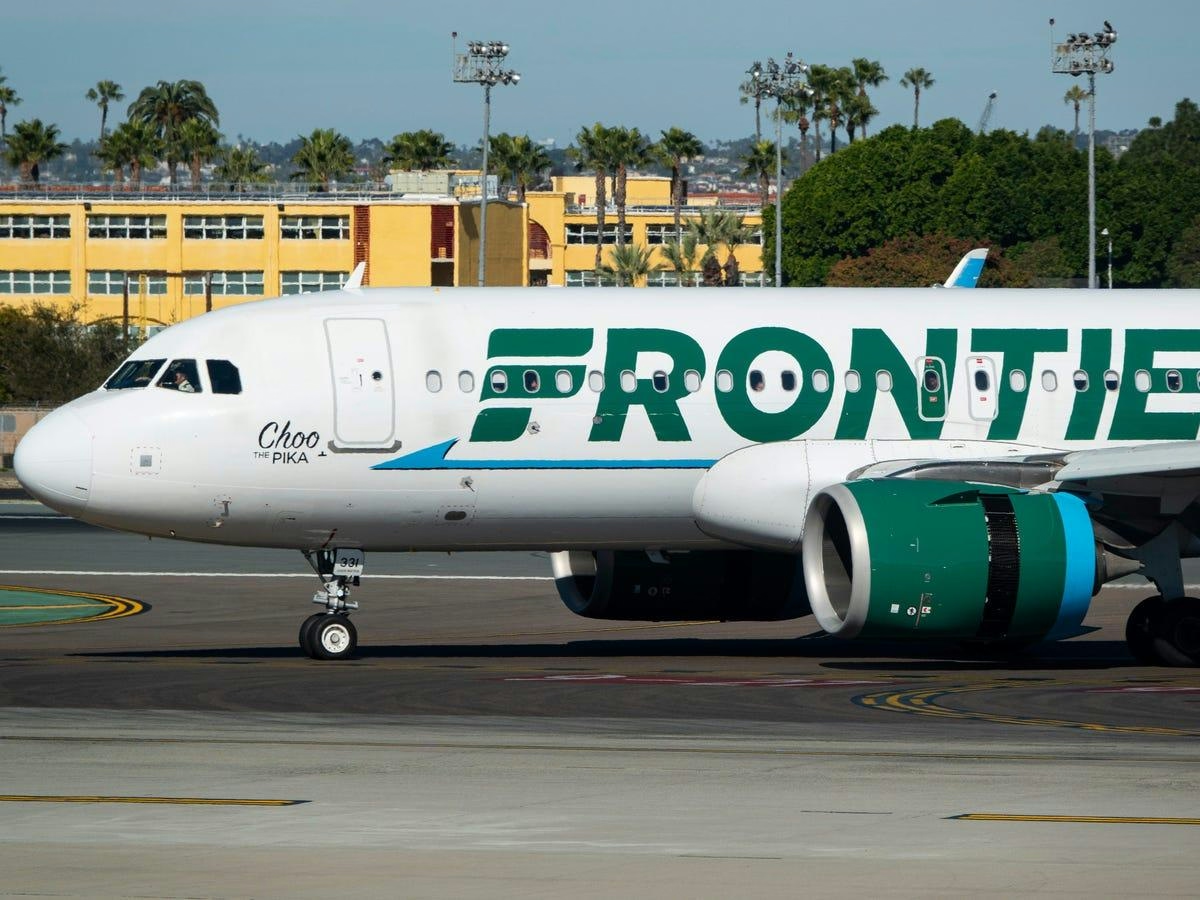
Frontier Airlines Airbus A321neo Returns to Cleveland After Engine Fire
Frontier Airlines Airbus A321neo Returns to Cleveland Following Engine Fire
An Airbus A321neo operated by Frontier Airlines was compelled to return to Cleveland Hopkins International Airport (CLE) this morning after experiencing an engine flameout shortly after takeoff. The aircraft, a two-year-old model powered by Pratt & Whitney PW1100G Geared Turbofan (GTF) engines, encountered the incident approximately 15 minutes into the flight. The event was initially reported by aviation watchdog JonNYC on the social media platform X.
Incident Details and Immediate Response
The flight crew responded promptly to the engine failure, safely returning the aircraft to Cleveland without any reported injuries or further damage. While specific details remain limited, it appears the flameout involved a single engine, as the aircraft landed without incident and no reports indicated a dual-engine failure. Engine flameouts are infrequent occurrences, and modern commercial jets are equipped with advanced safety systems and emergency protocols designed to manage such situations effectively. Pilots receive extensive training to handle power loss scenarios, enabling them to execute safe returns to airports, as demonstrated in this case.
Broader Context: Engine Reliability and Industry Challenges
This incident adds to ongoing concerns regarding the reliability of Pratt & Whitney’s GTF engines. The engine type has faced significant operational challenges, including manufacturing defects such as powdered metal contamination, which have led to the grounding of approximately one-third of the global GTF-powered fleet. The scale of these issues is unprecedented, with some airlines opting to retire relatively new A320 family aircraft to salvage and lease their engines. Lee McConnellogue, CEO of UK-based aerospace recycling firm eCube, described the situation as unparalleled in the history of the aviation industry.
Complicating matters further, Airbus recently issued a recall affecting hundreds of US-based aircraft, including those operated by American Airlines, Delta, and Frontier. This recall stems from a software issue unrelated to the engine problems but has necessitated widespread updates to onboard systems to prevent potential operational disruptions. Frontier Airlines is currently assessing the recall notice, while the broader industry has prioritized swift implementation of software updates to maintain safety and minimize delays.
For Frontier, the convergence of engine reliability concerns and the Airbus software recall highlights the operational pressures confronting airlines operating the latest generation of narrowbody jets. As the aviation sector navigates these overlapping technical challenges, the emphasis remains firmly on ensuring passenger safety and minimizing disruptions to flight schedules.
Ongoing Investigation
The Federal Aviation Administration (FAA) and Frontier Airlines have yet to release further information regarding the Cleveland incident. Investigations are ongoing as both the airline and regulatory authorities work to determine the root cause and uphold safety standards across the fleet.

Frontier Airlines A321neo Engine Incident Raises Concerns Over Flight Disruptions
Frontier Airlines A321neo Engine Incident Raises Concerns Over Flight Disruptions
Engine Flameout Forces Emergency Return
A Frontier Airlines Airbus A321neo was compelled to return to Cleveland International Airport shortly after takeoff due to an engine malfunction. The aircraft, equipped with Pratt & Whitney’s geared turbofan (GTF) engines, experienced a rare flameout—an unexpected loss of engine power. The flight concluded safely with no injuries reported among passengers or crew, averting what could have been a more serious incident.
This event has heightened scrutiny of both Frontier Airlines and the wider aviation industry, particularly regarding the reliability of Pratt & Whitney’s GTF engines. These engines have faced ongoing technical challenges, contributing to maintenance delays and flight disruptions across several carriers. Frontier’s rapid expansion of its A320 family fleet to accommodate increasing demand from budget travelers places additional pressure on the airline to maintain operational reliability amid these concerns.
Broader Implications for the Aviation Sector and Travelers
The incident raises significant questions about potential disruptions for passengers. Airlines operating aircraft with the affected engines have encountered difficulties in maintaining schedules, leading to delays and cancellations that reverberate through the hospitality and tourism industries. Frontier now faces intensified regulatory scrutiny and the prospect of increased maintenance costs, which may result in more frequent schedule adjustments or service interruptions in the near term.
Investor confidence has also been affected, as evidenced by a temporary decline in Frontier’s stock price following the incident. Competitors may capitalize on this vulnerability by attracting travelers seeking more dependable service, thereby increasing competitive pressures on Frontier. Should these operational challenges persist, other airlines stand to gain market share at Frontier’s expense.
Industry-Wide Challenges and Operational Complexities
Compounding Frontier’s difficulties are broader technical issues affecting the aviation sector. Airlines operating Airbus A320-family aircraft are contending with necessary software updates, which demand significant attention and resources. These concurrent challenges risk diverting focus from resolving engine reliability problems, complicating efforts to ensure seamless operations.
Guidance for Travelers
In light of these developments, passengers are advised to monitor flight statuses closely, particularly when traveling on A320neo family aircraft. Flexible booking options and travel insurance may help mitigate the impact of potential disruptions. Staying informed through official airline communications regarding maintenance updates or schedule changes is also recommended.
As Frontier Airlines and the industry at large address these technical and operational hurdles, the incident underscores the critical importance of rigorous aircraft maintenance and reliability. Passengers are encouraged to remain vigilant and plan accordingly to minimize the effects of any unforeseen travel disruptions.
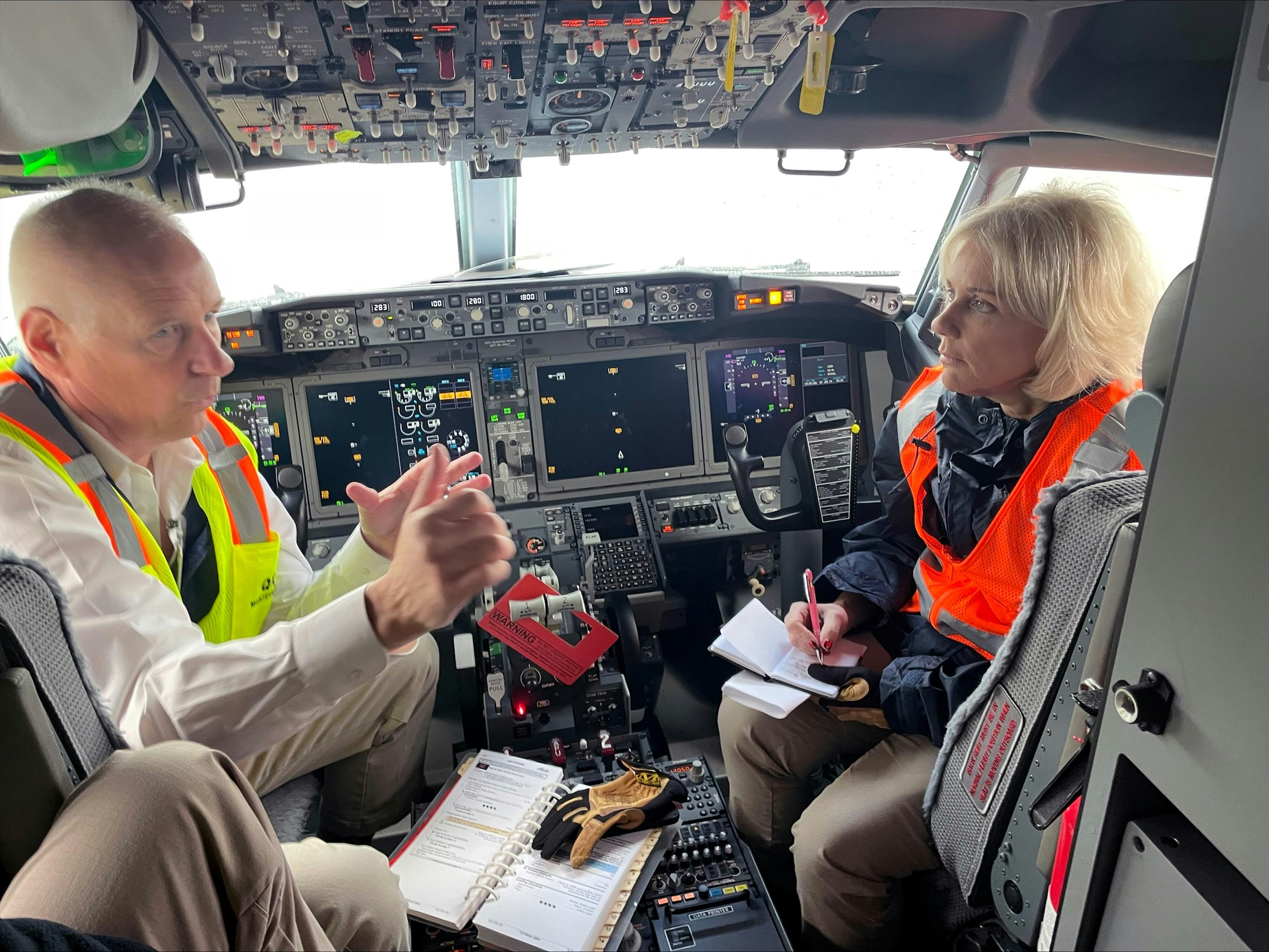
737 MAX Engine Shuts Down Mid-Flight After Cockpit Sun Visor Detaches
737 MAX Engine Shutdown Triggered by Detached Cockpit Sun Visor
A Ryanair-branded Boeing 737-8 MAX encountered an unusual in-flight emergency on December 8, 2025, when a cockpit sun visor detached during climb-out from Krakow, Poland, resulting in the shutdown of one of its engines. The aircraft, registered 9H-VUE and operated by Malta Air under a wet-lease agreement, was conducting flight FR-3505 to Milan Bergamo at the time of the incident.
Incident Overview and Flight Response
The flight departed Krakow at approximately 06:25 local time and was ascending through 8,000 feet when the crew halted their climb and maintained level flight. According to reports from the Aviation Herald, the detached sun visor struck an engine start lever, causing the shutdown of a CFM LEAP-1B engine. In response, the flight crew issued a “PAN PAN” call, indicating an urgent but non-life-threatening situation, and began troubleshooting while holding their heading.
After stabilizing at 10,000 feet, the crew successfully restarted the affected engine, canceled the PAN PAN alert, and proceeded to Milan Bergamo. The aircraft landed safely about 90 minutes later without further incident, and no injuries were reported among passengers or crew. The aircraft remained grounded in Milan for approximately 50 hours before returning to service.
Investigation and Industry Context
The Maltese Bureau of Air Accident Investigation (BAAI) has classified the event as an incident and initiated a formal investigation. No official report has yet been released, and the precise circumstances remain under review. Aviation experts have expressed skepticism regarding the likelihood of a sun visor—typically mounted high and forward near the windshield—dislodging and actuating an engine start lever, which is located low on the center pedestal and generally requires deliberate manipulation. Investigators are expected to analyze cockpit voice and flight data recorders, maintenance records, and hardware configurations to determine the sequence of events.
This incident occurs amid ongoing scrutiny of Boeing and the 737 MAX series. The U.S. Federal Aviation Administration (FAA) is currently reviewing Boeing’s cockpit alerting system for the forthcoming MAX 10 model, focusing on potential safety enhancements. The event has drawn renewed attention from aviation regulators worldwide and may prompt legal or operational repercussions should systemic issues be identified.
The aviation industry is also contending with broader challenges, including the need to retrofit thousands of passenger aircraft to mitigate pilot disorientation risks during solar storms—a vulnerability that could further disrupt flight operations. Wet-lease arrangements, such as the one involved in this case, are common during peak travel periods, with the marketing carrier selling tickets while another airline operates the flight under its own certificate. The aircraft’s Maltese registration (“9H”) and the use of CFM LEAP-1B engines are standard for the 737 MAX fleet. In-flight engine shutdowns remain rare, with certification standards requiring aircraft to safely continue flight and land on a single engine.
The ongoing investigation will seek to establish whether the detached sun visor was the direct cause, a contributing factor, or incidental to the engine shutdown, and whether any maintenance or procedural shortcomings played a role. Ryanair has not issued a statement regarding the incident.

Apollo Considers $12 Billion Sale of Atlas Air
Apollo Weighs $12 Billion Sale of Atlas Air Amid Industry Consolidation
Apollo Global Management is reportedly exploring the potential sale of Atlas Air Worldwide Holdings, its aviation business, in a transaction that could value the company at over $12 billion including debt. Sources familiar with the matter indicate that the US investment firm is in the preliminary stages of evaluating a divestment, with several industry players and private equity firms having already expressed initial interest. The discussions remain confidential, and Apollo may ultimately opt to retain the asset for a longer term. Representatives for Apollo declined to comment, and Atlas Air did not immediately respond to requests for comment.
Context of Industry Consolidation
The possible sale emerges amid a period of significant consolidation within the aircraft leasing sector. Notably, in September, Air Lease Corporation, an aviation finance company founded by industry veteran Steven Udvar-Hazy, was acquired for $7.4 billion by a consortium led by Sumitomo, which included SMBC Aviation Capital, Apollo, and Brookfield Asset Management. This transaction underscores the growing trend of mergers and acquisitions reshaping the aviation finance landscape.
Atlas Air operates a diverse fleet of Boeing aircraft, including 747s, 777s, 767s, and 737s, providing both aircraft leasing and charter flight services. The company offers planes to airlines under “dry leasing” agreements, which supply only the aircraft, as well as “wet leasing” arrangements that include crew, maintenance, and insurance. Additionally, Atlas Air conducts charter cargo and passenger flights, positioning itself as a versatile player in the air freight and passenger sectors.
Valuation and Market Implications
Apollo, leading an investor group, acquired Atlas Air in 2022 for approximately $5.2 billion including debt. The current potential sale price, which exceeds double that valuation, reflects the company’s growth trajectory and the intensifying competition within the air-freight market. Market analysts suggest that a transaction of this magnitude could prompt competitors to reevaluate their strategic positions, potentially increasing scrutiny of Atlas Air’s operational and financial performance.
Rival firms may seek to exploit any perceived vulnerabilities during the sale process, while the prospect of a high-profile deal is expected to attract heightened interest from both private equity and strategic buyers. This dynamic is likely to intensify competition within the sector, influencing future consolidation trends.
At present, Apollo’s considerations remain ongoing, and no definitive decision has been announced regarding the sale of Atlas Air.
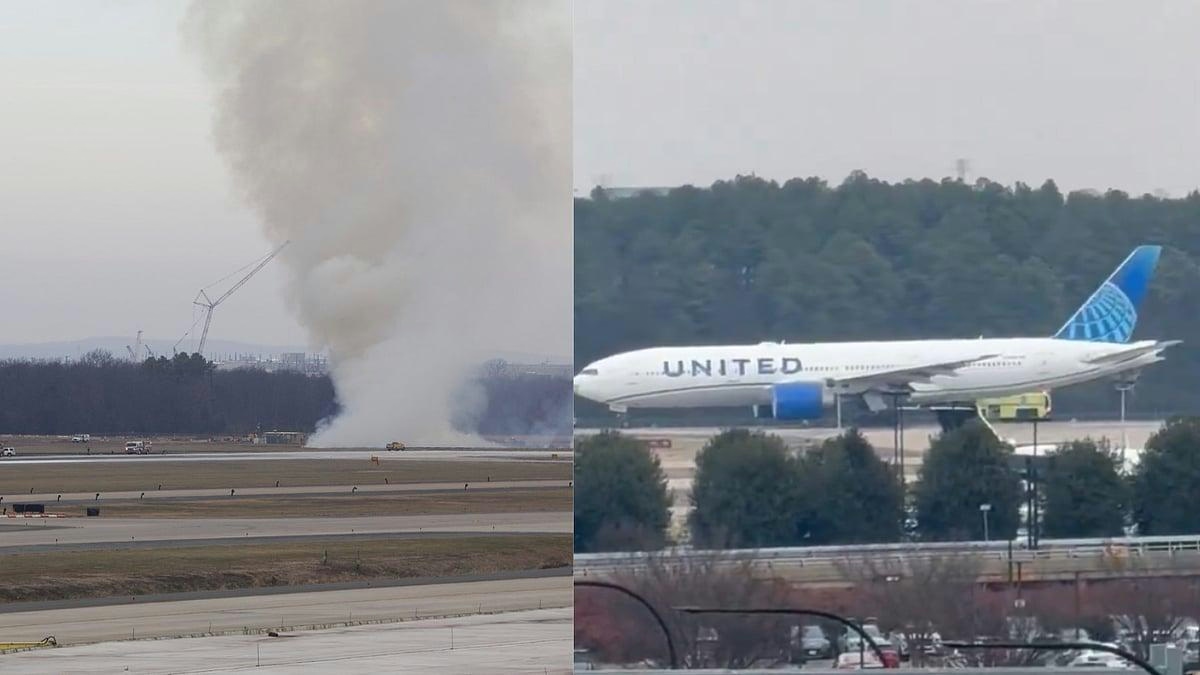
Boeing 777 Engine Failure Reported at Dulles Airport
Boeing 777 Engine Failure at Dulles Airport Triggers FAA Investigation
On December 15, a United Airlines Boeing 777-200ER experienced a significant engine failure during takeoff at Washington Dulles International Airport. The malfunction caused debris to ignite a brush fire near the runway, though no injuries were reported among passengers or crew. The incident has prompted an immediate investigation by the Federal Aviation Administration (FAA) and renewed attention on the safety of Boeing 777 engines.
Details of the Incident and FAA Response
The engine failure occurred as the United Airlines flight crew was preparing for departure. Thanks to the swift and decisive actions of the pilots, the aircraft was brought to a safe stop without further incident. Airport fire services responded promptly, containing the brush fire caused by engine debris. United Airlines confirmed that all safety protocols were effectively executed, ensuring the safety of everyone on board.
In response, the FAA has initiated a thorough investigation focusing on the aircraft’s maintenance history and potential manufacturing defects. Given the Boeing 777’s prior record of engine-related issues, regulators are approaching the situation with heightened vigilance. There is a possibility that the FAA may impose temporary restrictions or grounding of Boeing 777-200ER aircraft pending the investigation’s outcome. The scrutiny is expected to extend to Boeing’s manufacturing and maintenance procedures as part of the inquiry.
Implications for United Airlines, Boeing, and the Industry
The incident presents immediate operational and financial challenges for United Airlines. The airline may be required to conduct additional inspections across its fleet, potentially disrupting flight schedules. Following the news, United’s stock price declined by 1.43% to $106.84, although it remains up 7.5% over the past year. Market analysts have maintained a ‘Neutral’ rating on United, with a consensus price target of $116.50. While short-term expenses may increase due to inspections and possible compensation claims, United’s financial position remains robust, supported by strong free cash flow and notable earnings growth.
For Boeing, the event has intensified regulatory scrutiny and raised concerns among investors. The company’s stock experienced a temporary decline as safety worries resurfaced. Should the FAA investigation reveal systemic issues, Boeing could face broader reputational damage and potential impacts on its market share. Insurance claims related to the incident may also pose financial risks.
Within the broader airline industry, the incident underscores ongoing challenges related to operational costs and regulatory compliance. United Airlines has demonstrated resilience, achieving nearly 20% earnings per share growth over the past year and maintaining a price-to-earnings ratio of 10.70, which suggests value for investors. Despite the current volatility, United’s long-term outlook remains positive, bolstered by efforts to improve operational efficiency and expand its route network.
Competitors such as Airbus may stand to benefit if Boeing’s reputation is adversely affected, potentially gaining market share as airlines reconsider future aircraft acquisitions. The market continues to monitor the FAA’s investigation closely, awaiting regulatory decisions that could influence the competitive landscape.
The Boeing 777 engine failure at Dulles represents a critical juncture for both United Airlines and Boeing. The FAA’s findings will be instrumental in determining accountability and shaping future safety standards, with significant implications for both companies’ operational and financial trajectories.

PCC Approves Acquisition of Global Aircraft Leasing Firm
PCC Approves Acquisition of Global Aircraft Leasing Firm
The Philippine Competition Commission (PCC) has approved the proposed acquisition of aircraft assets of CL Financing Gold Ltd. from subsidiaries of Vmo Aircraft Leasing GP, LLC. In a decision dated November 6, the antitrust regulator determined that the transaction is unlikely to substantially lessen competition in the global dry leasing of aircraft.
Transaction Overview and Market Impact
The approval follows an extensive review process, including interviews and consultations conducted by the PCC’s mergers and acquisitions office to assess the potential competitive effects of the deal. CL Financing Gold Ltd., a consortium of global investment and asset management firms incorporated in the Cayman Islands, entered into an agreement with Vmo Aircraft Leasing on June 27 to acquire the aircraft assets. Vmo Aircraft Leasing, a multinational commercial aircraft lessor, is supported by private equity and credit groups managed by Los Angeles-based Ares Management Corp.
The PCC noted that both CL Financing Gold and Vmo Aircraft Leasing hold minimal market shares within the global dry leasing sector. The Commission emphasized that the industry remains dynamic and competitive, with a sufficient number of existing players and strong market appeal for new entrants. This environment, the PCC concluded, ensures that competition will remain robust following the transaction.
Regulatory Context and Industry Implications
The approval comes amid increased regulatory scrutiny of large-scale transactions in the aviation sector. Recent deals, such as Boeing’s acquisition of Spirit AeroSystems, have been subject to stringent regulatory conditions aimed at addressing anti-competitive concerns. The PCC’s decision aligns with global regulatory standards, underscoring the importance of safeguarding market competition and consumer welfare.
The Commission also acknowledged potential challenges associated with such acquisitions, including regulatory compliance, market competition, and the integration of acquired assets. Market responses to similar transactions have included fluctuations in the stock prices of both acquiring and competing firms, as well as strategic adjustments by competitors to preserve market share and maintain competitive pricing.
In its statement, the PCC highlighted that “the presence of sufficient existing players and the attractiveness of the market to new entrants ensure that competition will remain robust.” The Commission reaffirmed that its approval supports its mandate to prevent consolidation in specialized global industries, such as aviation leasing, from harming competition.
Under the Philippine Competition Act, the PCC is responsible for reviewing mergers and acquisitions to prevent transactions that could diminish market competition or adversely affect consumer welfare. The Commission reiterated its commitment to protecting consumer interests and promoting a level playing field across diverse markets.
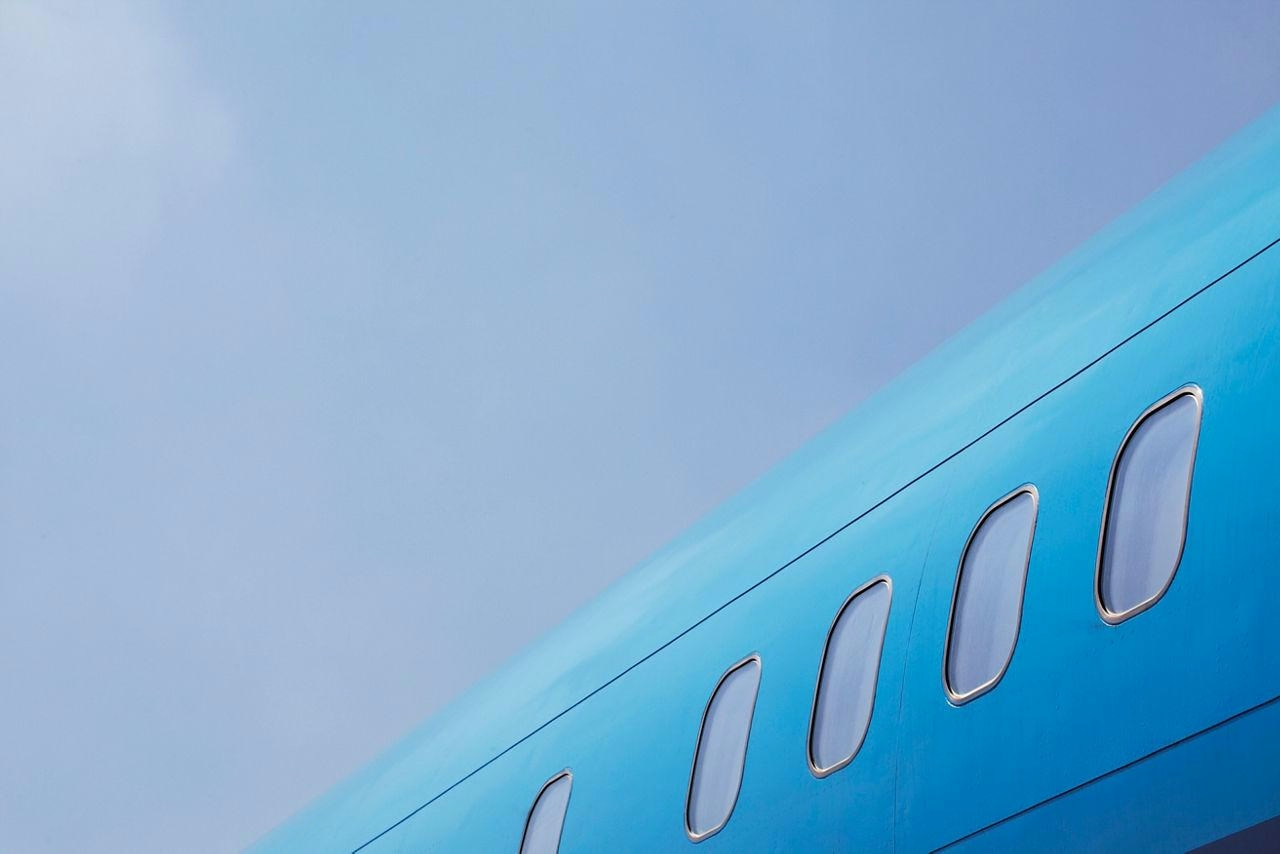
Clean Aviation Outlines Project Plan Featuring Three Key Initiatives
Clean Aviation Outlines Project Plan Featuring Three Key Initiatives
Clean Aviation has revealed a comprehensive project plan centered on three major initiatives aimed at advancing hybrid-electric propulsion and next-generation aircraft technologies. The plan, detailed in a draft of the organisation’s fourth call for proposals expected in February, includes a significant funding allocation from the European Union to support the development of ground demonstrators for hybrid-electric narrowbody powerplants. This initiative forms part of a broader research agenda targeting regional and narrowbody aircraft, hydrogen propulsion, and disruptive aviation technologies.
Funding Allocation and Strategic Focus
The European Union is set to provide €329.5 million in funding through Clean Aviation, with the objective of leveraging private sector contributions to reach a total research investment of €824 million. This funding will be distributed across five principal streams. The largest portion, €130 million, is dedicated to ultra-efficient short- to medium-range (SMR) aircraft architectures, supporting five projects. Hydrogen propulsion will receive €101 million for four projects, while €40 million is allocated to the development of ultra-efficient regional aircraft architectures through a single project. An additional €40 million is reserved for seven fast-track agile projects focusing on disruptive technologies, and €18.5 million will support four projects under transverse activities, including the development of certification standards.
Central to the plan is the hybrid-electric demonstrator initiative, which aims to develop a hybrid-electric propulsion sub-system integrated into an SMR engine, targeting service entry around 2035. Up to three projects will be selected, with flexibility for contractors to employ either ducted or unducted engine designs. Each project is required to reach technology readiness level (TRL) 5 by completion, demonstrating functional capabilities such as power extraction, injection, and transient-assist modes under relevant operational conditions.
Technological Ambitions and Industry Participation
Clean Aviation’s technology-agnostic approach allows for a broad range of potential participants, including major engine manufacturers such as Safran, Rolls-Royce, and MTU Aero Engines. Safran’s involvement could build on its CFM International joint venture, which is developing the RISE open-rotor engine incorporating hybrid-electric elements. MTU Aero Engines is expected to leverage its ongoing SWITCH project, which focuses on hybridising the Pratt & Whitney PW1100G engine. All technologies entering phase two of the programme must have achieved TRL 4 at the project’s outset.
The hybrid-electric propulsion architecture is expected to deliver at least a 5% reduction in fuel burn and CO2 emissions at the aircraft level. In addition to emissions targets, the projects must address critical challenges related to thermal management, energy efficiency, and control systems. Within the SMR stream, €40 million is specifically earmarked for the development and demonstration of a lightweight, aerodynamic rear fuselage and empennage. This effort aims to achieve an additional 2% reduction in CO2 emissions while validating advanced manufacturing techniques suitable for high-rate production.
In the regional aircraft segment, Clean Aviation plans to allocate €40 million for the development and demonstration of an advanced airframe encompassing the wing, fuselage, empennage, and key enabling systems. This initiative supports the hybrid-electric Ultra-Efficient Regional Aircraft (UERA) concept, where airframe innovations are expected to contribute approximately one-third of the targeted 30% reduction in CO2 emissions. Notably, three projects related to UERA development, including hybrid-electric engines, have already been selected for funding.
Challenges and Industry Context
Despite the ambitious scope of Clean Aviation’s plan, several challenges remain. Securing sufficient EU funding is a critical concern, particularly given competition from other aviation research initiatives. Market analysts have expressed skepticism regarding the feasibility of hybrid-electric ground demonstrators and the overall viability of the proposed technologies within the projected timelines. Furthermore, major aerospace competitors such as Airbus and Boeing are advancing their own sustainability strategies, which may divert industry focus and resources away from Clean Aviation’s initiatives.
The evolving industrial strategy of the European Commission for aviation also introduces uncertainty, as shifting funding priorities and regulatory frameworks could influence the trajectory of Clean Aviation’s projects. These factors collectively underscore the complex environment in which Clean Aviation seeks to drive innovation in sustainable aviation technologies.
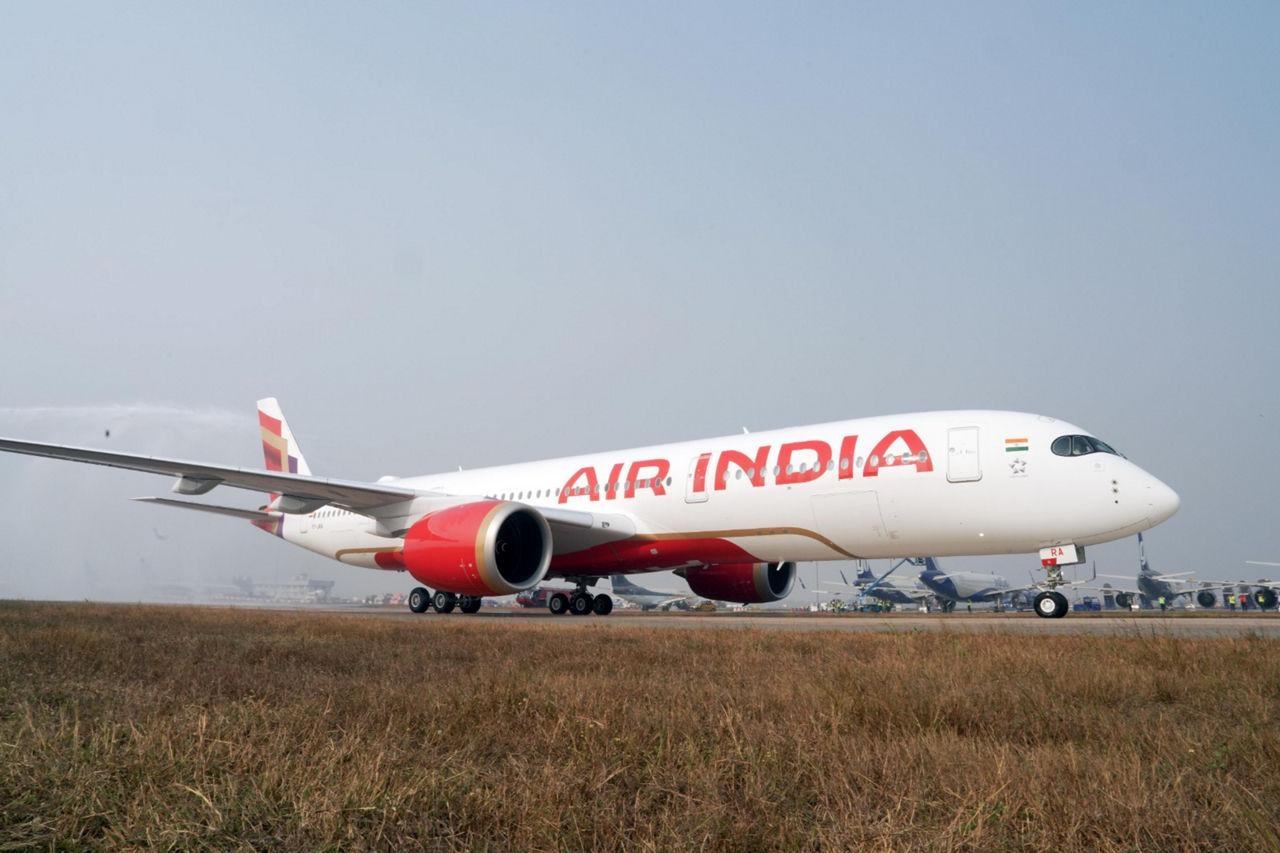
Air India Announces Delivery Schedule for A321neo, A350-1000, and 787-9 Aircraft
Air India Announces Delivery Schedule for A321neo, A350-1000, and 787-9 Aircraft
Major Fleet Modernization Underway
Air India Group, now under the ownership of the Tata Group, is advancing a landmark fleet renewal initiative that promises to transform its operational capabilities and competitive positioning within the Indian aviation sector. Central to this effort is an unprecedented order of 570 aircraft, among the largest in the history of commercial aviation. This extensive acquisition includes the latest models from Airbus and Boeing, notably the A321neo, A350-1000, 787-9 Dreamliner, and 777-9. These additions are expected to significantly expand Air India’s capacity and modernize its fleet.
Delivery Timeline and Deployment Plans
To date, the Air India Group—which comprises both Air India (AI) and Air India Express (IX)—has taken delivery of six Airbus A350-900s alongside more than 40 Boeing 737 MAX aircraft. The next phase of this fleet expansion is scheduled to commence in mid-2025, with the introduction of the first A321neo, A350-1000, and 787-9 Dreamliner aircraft. This phase represents a critical step in the airline’s strategy to increase capacity and enhance service offerings.
Air India Express will be the initial operator of the new A321neo, launching scheduled services from April 15, 2025. The inaugural routes will connect Delhi (DEL) with Bengaluru (BLR) and Srinagar (SXR), with subsequent expansions on April 20 to include Ayodhya (AYJ) and Jaipur (JAI). The A321neo will be configured with 180 economy seats and 12 business class seats, providing improved passenger options on key domestic routes. Currently, Air India operates two A321neos (registrations VT-RTC and VT-RTD) in a 192-seat dual-class layout.
Supply Chain Challenges and Operational Adjustments
Despite the progress, Air India continues to grapple with significant supply chain disruptions. CEO Campbell Wilson has acknowledged ongoing difficulties in procuring essential components such as engines, fuselages, and premium cabin seats. These challenges are expected to cause delivery delays from both Airbus and Boeing, potentially affecting the airline’s growth trajectory for the next four to five years. In response, Air India is extending the operational lifespan of older aircraft, which entails increased maintenance costs, and is facing obstacles in leasing additional planes due to global shortages. The airline is also exercising prudence regarding further Boeing orders amid manufacturing and regulatory constraints.
Widebody Fleet Expansion: A350-1000 and 787-9
The first A350-1000 destined for Air India is nearing completion at Airbus’s Toulouse facility and is anticipated to be delivered in 2026. Currently registered as F-WZFI, the aircraft will soon be re-registered under the VT-series for Indian operations. Concurrently, the initial Boeing 787-9 Dreamliners from the 2023 order are expected to arrive by the end of 2025. Three 787-9s are presently in production at Boeing’s Charleston, South Carolina plant, equipped with General Electric GEnx-1B engines.
Order Composition and Market Implications
Air India’s comprehensive 570-aircraft order includes 20 A350-900s, 20 A350-1000s, 140 A320neos, and 70 A321neos from Airbus, alongside 20 787-9 Dreamliners, 10 777X, and 190 737-8 MAX aircraft from Boeing. Additionally, a 2024 order comprises 10 more A350s and 90 A320 Family aircraft. This sweeping modernization is anticipated to provoke strategic responses from rival carriers, who may reassess their fleet plans in light of Air India’s expanded capacity. Industry analysts expect this development to intensify competition and elevate passenger service standards across the Indian aviation market.
Commitment to Sustainability and Efficiency
Air India’s investment in next-generation aircraft reflects a strong commitment to operational efficiency, passenger comfort, and environmental stewardship. The new A350 and 787-9 models offer substantial fuel savings and reduced emissions, aligning with global efforts to promote sustainable aviation. As these aircraft enter service from mid-2025 onward, Air India is positioned to lead the industry’s transition toward eco-friendly, high-capacity air travel.
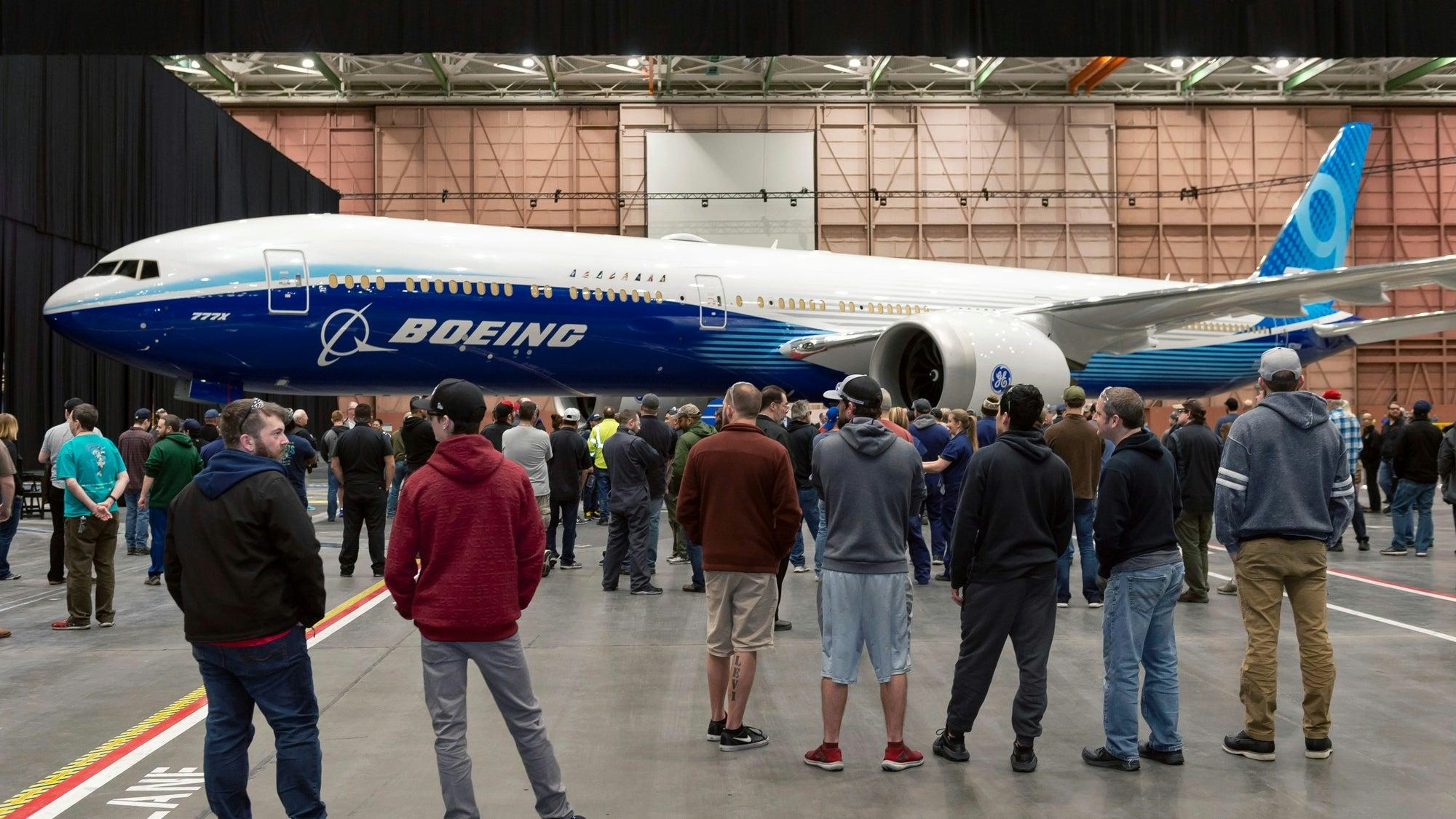
Why the Boeing 777X Is Limited to a Single Engine Type
Why the Boeing 777X Is Limited to a Single Engine Type
The Boeing 777X, poised to enter service in the coming years, will be powered exclusively by the GE Aerospace GE9X turbofan. This decision marks a significant shift from earlier Boeing 777 models, which offered airlines a choice among engines from General Electric, Pratt & Whitney, and Rolls-Royce. The move to a single engine supplier reflects broader industry trends and the specific circumstances surrounding the 777X program.
A Shrinking Pool of Engine Suppliers
The widebody aircraft engine market is currently dominated by just three major manufacturers: GE Aerospace, Rolls-Royce, and Pratt & Whitney. Unlike the 1990s, when airlines could select from multiple engine options for new aircraft, the development of bespoke engines for a limited market has become increasingly impractical. The 777X targets a specialized segment, with 565 firm orders as of late 2025. Notably, approximately half of these orders come from two airlines—Emirates and Qatar Airways—both longstanding customers of GE engines.
The substantial cost of developing a new engine capable of producing around 100,000 pounds of thrust presents a formidable barrier. For Rolls-Royce or Pratt & Whitney, the limited sales potential of the 777X makes the investment difficult to justify. Even if a second engine option were developed, it remains uncertain whether sufficient airline demand would exist to recoup the development expenses.
Industry Relationships and Standardization
Boeing’s longstanding partnership with GE Aerospace has also been a decisive factor. Airlines often prefer to standardize their fleets with engines from a single manufacturer to simplify maintenance and capitalize on existing supplier relationships. The 777X is designed as the successor to the 777-300ER and 777-200LR, both exclusively powered by GE engines. This continuity streamlines operations for major customers such as Emirates and Qatar Airways.
In contrast, Boeing’s 787 Dreamliner offers two engine options, partly to compete directly with Airbus and to appeal to a broader range of airline preferences. However, the 777X’s more specialized market and established customer base have made a single-engine strategy more practical and economically viable.
Competitive Pressures and Market Dynamics
The decision to rely solely on the GE9X engine comes amid intensified competition and evolving market dynamics. Airbus, Boeing’s chief competitor, recently encountered quality issues with its A320 family, highlighting the risks associated with complex supply chains. Meanwhile, Emirates, one of the largest customers for the 777X, has publicly expressed frustration over program delays but remains committed to operating both Boeing and Airbus fleets.
Looking forward, emerging players such as China’s Comac are beginning to challenge established aerospace manufacturers, adding further complexity to the competitive landscape. Boeing’s position remains fluid, with its stock price reacting to delivery figures, regulatory developments, and ongoing Federal Aviation Administration certification efforts for the 777X. The company aims to secure certification in 2026 and commence service in 2027.
The exclusive use of the GE9X engine on the 777X thus reflects a confluence of economic considerations, strategic partnerships, and market realities shaping the future of commercial aviation.
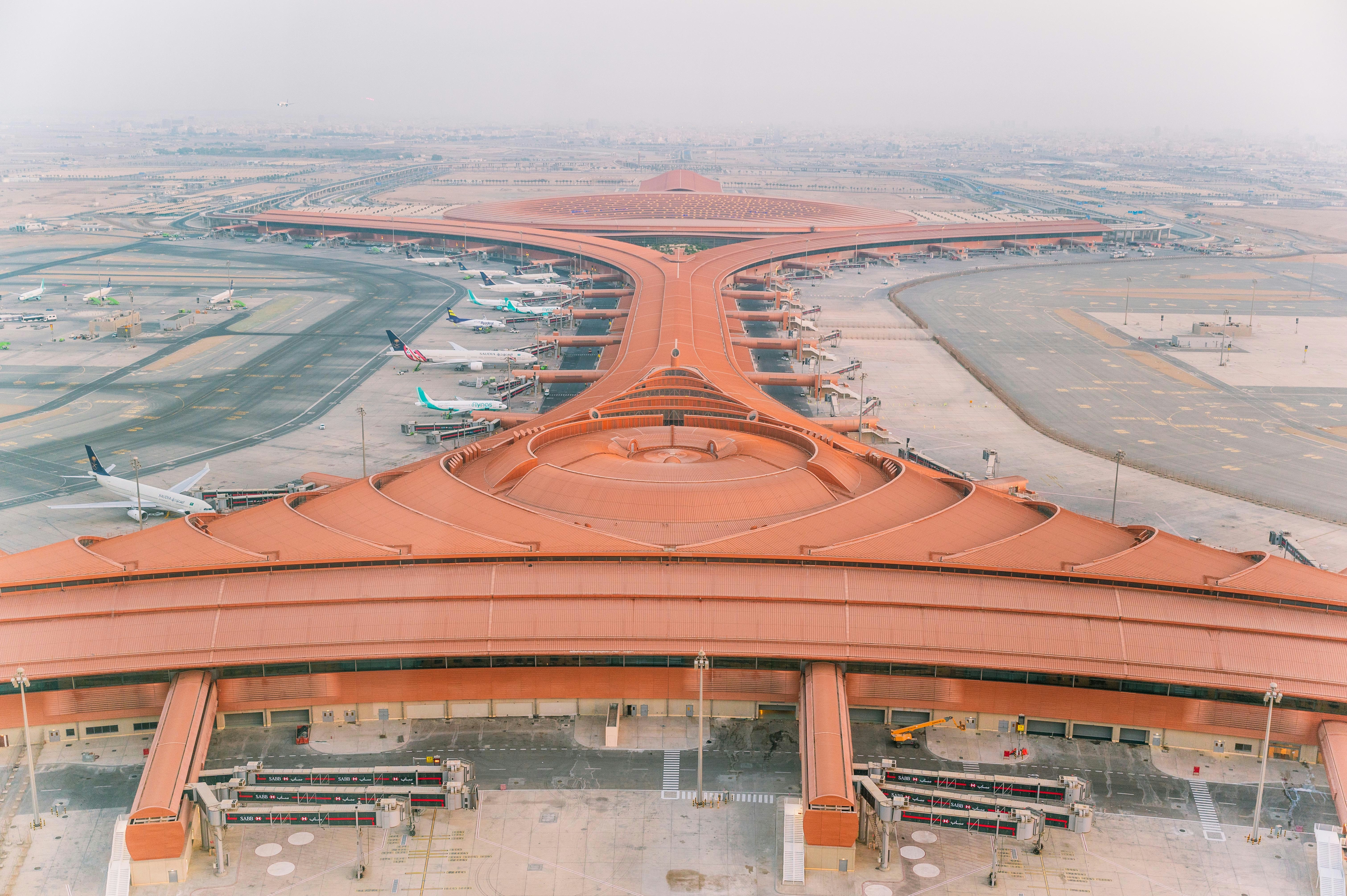
AI and Digital Twins Enhance Airport Operations Amid Global Challenges
AI and Digital Twins Enhance Airport Operations Amid Global Challenges
The global Airport IT Systems market is experiencing significant transformation, propelled by advancements in artificial intelligence (AI), digital twins, automation, and contactless technologies. These innovations are driving improvements in operational efficiency, weather disruption management, security enhancement, and passenger flow optimization. As major airports increasingly implement Airport Predictive Operations Centres (APOCs), biometric processing, and smart infrastructure, the sector is anticipated to expand at a compound annual growth rate (CAGR) of 3.3% between 2025 and 2031.
AI-Driven Solutions Mitigate Weather and Operational Disruptions
Airports around the world are adopting AI and predictive analytics to address operational challenges such as adverse weather conditions, thereby enhancing passenger experience and safety. Indira Gandhi International Airport in Delhi serves as a prominent example, utilizing AI-powered predictive models alongside three runways equipped with CAT-III Instrument Landing Systems to facilitate safe landings in dense fog. The airport’s APOC integrates real-time data streams, weather forecasts, and airside inputs to enable swift decision-making regarding runway utilization, gate assignments, and aircraft sequencing. Collaboration with the Indian Institute of Tropical Meteorology’s Winter Fog Experiment (WiFEX) further refines fog prediction capabilities, allowing for proactive allocation of resources.
At a national level, the Airports Authority of India is modernizing air traffic management through the deployment of new automation tools and satellite-based navigation systems. These upgrades align with international standards and address recent technical glitches, underscoring the critical importance of resilient IT infrastructure and robust cybersecurity measures to maintain uninterrupted airport operations.
Digital Twins and APOCs Revolutionize Airport Management
Contemporary APOCs harness the power of digital twins, AI, machine learning, big data analytics, and the Internet of Things (IoT) to deliver comprehensive, real-time situational awareness across terminal, landside, and airside operations. Hyderabad Airport’s implementation of such technologies by WAISL exemplifies the benefits of integrated airport management, including improved queue management, enhanced disruption response, and progress toward sustainability objectives. Digital twins facilitate the simulation of emergencies, crowd dynamics, and spatial optimization, enabling a shift from reactive to predictive operational strategies.
Noida International Airport is emerging as a fully digital facility, featuring innovations such as self-bag-drop counters, biometric boarding gates, and seamless connectivity designed to prioritize speed and passenger convenience. These advancements incorporate locational intelligence and mobile crowd data analytics, providing detailed insights that enhance operational efficiency and passenger throughput while reducing traditional bottlenecks.
Enhancing Passenger Processing, Security, and Ethical Governance
The adoption of contactless technologies—including biometric screening, mobile boarding passes, and touchless kiosks—addresses heightened hygiene concerns in the post-pandemic era while streamlining passenger processing. Strategic partnerships, such as that between SITA and Palo Alto Networks, are reinforcing cybersecurity frameworks amid escalating threats. Infrastructure upgrades at major hubs like Heathrow Airport further bolster network resilience. Security platforms now integrate AI-enhanced video analytics, perimeter intrusion detection systems, and zero-trust architectures to strengthen overall safety.
Software solutions dominate the market landscape, with integrated management platforms serving airlines, ground handlers, and security personnel. Cloud-based data sharing and real-time decision support systems are becoming industry standards, while passenger information systems evolve into sophisticated cloud dashboards.
Despite these technological advances, the rapid integration of AI and digital twins raises significant concerns. Industry leaders and surveys have highlighted risks related to data privacy breaches and algorithmic bias, fostering skepticism regarding the self-regulation practices of major technology providers. These challenges emphasize the necessity for robust ethical frameworks and transparent governance structures. In response, competitors are adopting AI-native Digital Business Support Systems (BSS) that enable continuous iteration and automation, leveraging digital twins to proactively enhance passenger experiences and incorporating richer urban insights through mobile crowd data.
As airports continue to embrace these cutting-edge technologies, the emphasis remains on developing smart, resilient, and ethically governed systems that prioritize operational efficiency, safety, and passenger satisfaction within an increasingly complex global environment.
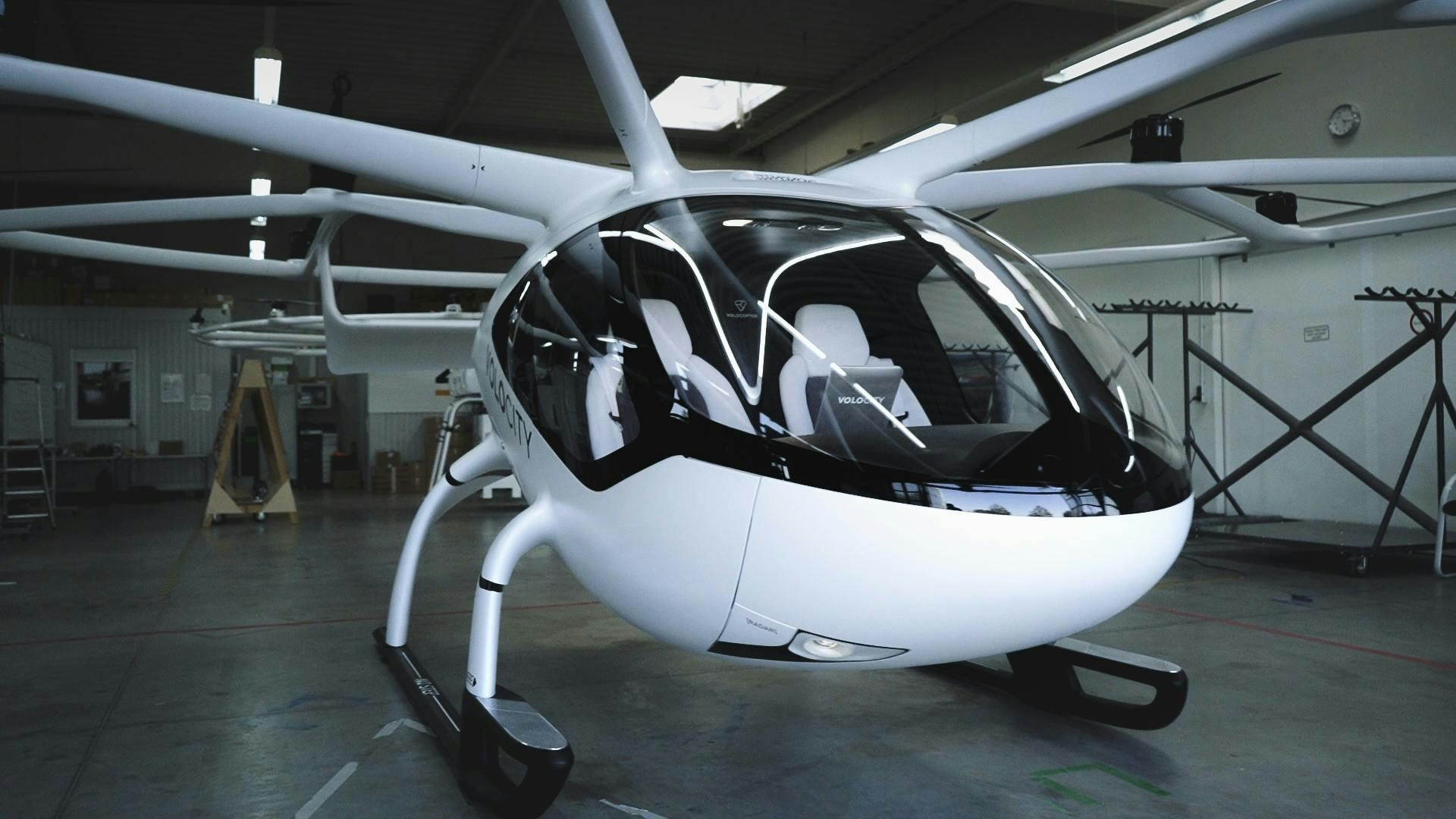
Tech Companies Propose Flying Taxis for Military Use
Tech Companies Advance Flying Taxi Technology for Military Applications
US technology firms are accelerating the development of flying taxis, also known as vertical takeoff and landing vehicles (VTOLs), targeting both commercial and military markets. Leading companies such as Archer Aviation, Joby Aviation, and Beta Technologies are pioneering hybrid, autonomous air taxis designed to transport passengers on short urban routes, such as between Manhattan and LaGuardia Airport, while simultaneously exploring their potential utility on the battlefield.
Innovations in VTOL Design and Military Potential
These VTOL aircraft combine the vertical takeoff and landing capabilities of helicopters with the speed and efficiency of fixed-wing airplanes. Although commercial operations have yet to commence in the United States, industry experts anticipate that these vehicles could become operational within the next few years. The Pentagon has increasingly turned to the tech sector in search of faster, more cost-effective solutions than those traditionally provided by established defense contractors. In response, the Department of Defense has committed billions of dollars toward emerging technologies and issued requests for information on hybrid and autonomous VTOL platforms.
The military envisions these aircraft fulfilling a variety of roles, including cargo transport, intelligence gathering, surveillance, and the discreet movement of supplies. Some battlefield VTOL prototypes incorporate advanced autonomous systems capable of threat detection and avoidance. For instance, Beta Technologies’ military model allows a human operator to input destination coordinates while artificial intelligence manages navigation. Removing the need for onboard pilots reduces aircraft weight by eliminating seats and passenger safety systems, enhancing operational efficiency.
While commercial VTOLs are generally fully electric, military variants are being developed with gas-electric hybrid engines to extend range and increase payload capacity—critical factors for defense missions. Beta Technologies CEO Kyle Clark emphasized the strategic advantage of these capabilities, stating, “When we can fundamentally go further and faster than a helicopter, then we have a tool that's more powerful than what the Chinese are going to bring to the fight.”
Global Competition and Regulatory Challenges
The global race to develop advanced VTOL technology is intensifying, with Chinese companies such as EHang competing alongside American innovators. Although China currently dominates the market for smaller aerial combat drones, the VTOL sector remains highly contested, with US firms eager to establish leadership.
Despite significant technological progress, the industry faces substantial regulatory challenges. Certification processes in the United States and Europe are protracted, prompting some companies to pursue approvals in regions like the Middle East, where regulatory frameworks are less restrictive. This approach has raised concerns among industry leaders about the potential risks of premature deployment.
Market responses to these developments have been varied. Beta Technologies experienced a surge in its stock price following a $1 billion motor supply agreement with Eve Air Mobility, while other air taxi companies have seen declines. As the Pentagon evaluates potential contracts, manufacturers of air taxis are positioning themselves to become key suppliers in both commercial and defense sectors.
With billions of dollars in prospective defense funding and rapid advancements by global competitors, the coming years will be pivotal for the integration of flying taxis into civilian transportation and military operations alike.
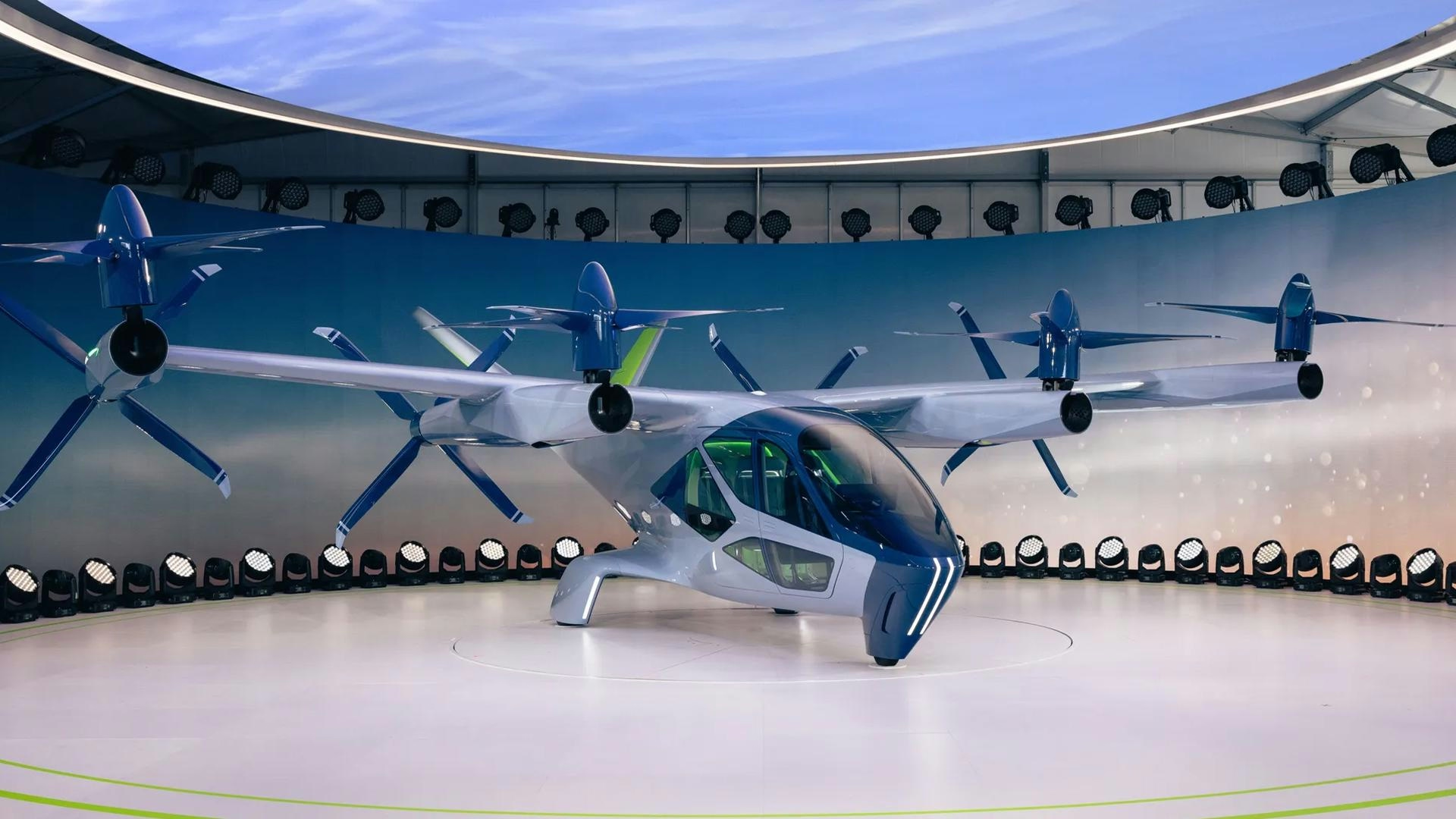
Flying Taxis and the Future of Urban Air Mobility
Flying Taxis and the Future of Urban Air Mobility
Innovations on Display at the China International Import Expo
At the recently concluded eighth China International Import Expo (CIIE) in Shanghai, visitors were offered a compelling preview of the future of urban transportation through the latest advancements in electric vertical takeoff and landing (eVTOL) aircraft. Four leading manufacturers showcased their cutting-edge models, underscoring the rapid development of urban air mobility (UAM) and the expanding low-altitude economy in China.
Shanghai-based VerTaxi, participating in the CIIE for the third consecutive year, attracted considerable attention with its upgraded M1 eVTOL aircraft. The company featured a simulated terminal at its booth, providing visitors with an immersive experience of the entire flying taxi process—from ticket purchase to boarding. VerTaxi emphasized the importance of such terminals as critical infrastructure for efficient passenger handling and aircraft operations within the UAM ecosystem.
VerTaxi illustrated the potential of flying taxis to transform urban travel by outlining hypothetical routes and fares. A trip from the expo venue to any location within Shanghai could take approximately 10 minutes, while a journey to Pudong International Airport would require 15 minutes at a cost of around 100 yuan ($14). A longer trip to Hangzhou’s West Lake was estimated at 45 minutes for about 260 yuan. These prices are competitive with, and in some cases lower than, traditional taxi fares. During the expo, VerTaxi secured intended orders exceeding 2 billion yuan for 200 units of the M1 from both domestic and international clients.
“Back in 2023, we were the only company to bring a full-size aircraft to the CIIE. This year, there were four. The low-altitude economy in China is flourishing, and public interest is surging. Every day, our booth was packed with visitors asking when UAM operations would begin,” said Yue Tingting, vice-president of VerTaxi.
Industry Developments and Global Context
Other exhibitors also made notable contributions to the event. TCab Tech presented its five-seat E20 tilt-rotor eVTOL, which recently completed its maiden manned flight. The company anticipates that this tilt-rotor configuration will become a mainstream design for future eVTOL aircraft, reflecting broader industry trends.
Despite the enthusiasm surrounding flying taxis, the sector faces considerable challenges. Regulatory frameworks remain under development, safety concerns persist, and the establishment of comprehensive infrastructure is essential for large-scale deployment. Production scalability is another significant hurdle, as demonstrated by companies such as Archer Aviation, Joby Aviation, and SkyDrive, which are actively engaged in pilot projects across the United States and Japan.
Internationally, several cities are advancing plans to integrate urban air mobility into their transportation networks. Tokyo aims to launch commercial urban air taxi services by 2030, while Central Florida is positioning itself as a testing ground for autonomous vehicles and air taxis. In the Middle East, Dubai and Abu Dhabi are progressing with commercial electric-powered UAM initiatives, signaling a global momentum toward embracing this emerging mode of transport.
Outlook for Urban Air Mobility
The strong market response at the CIIE, coupled with growing international interest, indicates that urban air mobility is steadily moving from concept to reality. As manufacturers, regulators, and urban planners collaborate to overcome safety, regulatory, and infrastructure challenges, flying taxis may soon become an integral part of cityscapes worldwide.
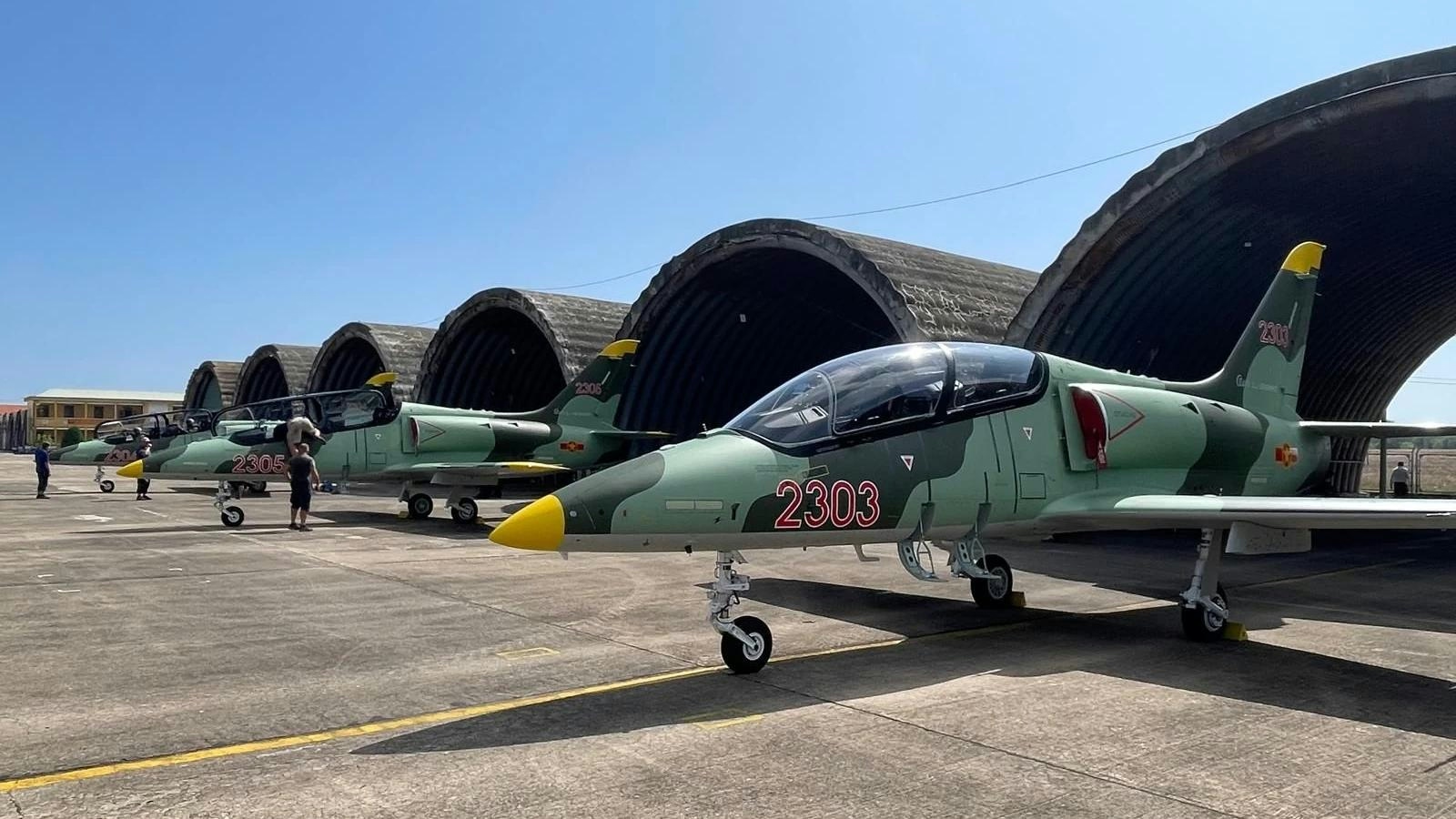
Vietnam Grounds 28 Aircraft Amid Global Engine Shortage
Vietnam Grounds 28 Aircraft Amid Global Engine Shortage
Operational Impact of Engine Supply Constraints
HANOI — Vietnam’s aviation industry is grappling with significant operational disruptions as a global shortage of aircraft engines has compelled the grounding of 28 commercial planes. This development stems from worldwide recall and repair directives issued by engine manufacturer Pratt & Whitney, illustrating the extensive repercussions of ongoing engine supply challenges on both Vietnamese and international airlines.
The Civil Aviation Authority of Vietnam (CAAV) reports that the affected fleet comprises 24 Airbus A321neo, three Airbus A350, and one Airbus A320ceo aircraft. These grounded planes represent 13.1% of the country’s total commercial fleet, with 28 out of 213 operational aircraft currently out of service. Although this figure is five fewer than the same period last year, signaling some improvement, the shortage continues to disrupt airline operations and scheduling across the sector.
Industry Dynamics and Market Responses
The persistent scarcity of engines has intensified demand for maintenance, repair, and operations (MRO) services, as airlines face constraints in acquiring new aircraft and contend with aging fleets. Industry analysts highlight that this environment is heightening competition among engine manufacturers, which may lead to increased costs and pressure on airline profitability. Airlines are consequently exposed to greater operational disruptions, financial strain, and scheduling delays as they adjust to reduced fleet availability.
In response to these challenges, engine manufacturers and industry players are pursuing strategic partnerships, accelerating production efforts, and investing in technological innovations to secure market share and address the surging demand for engine components and services.
Vietnam’s Aviation Network and Passenger Traffic
Despite these operational hurdles, Vietnamese carriers continue to maintain extensive domestic and international networks. Core routes connect Hà Nội (HAN) and Ho Chi Minh City (SGN), the nation’s principal aviation hubs, with nearly 50 domestic routes linking 20 airports nationwide. On the international front, Vietnamese airlines operate 113 routes to 24 countries and territories, while foreign carriers from 30 countries serve Vietnam through 142 regular international routes, underscoring the country’s strong global air connectivity.
As of December 11, 2025, Vietnam’s registered aircraft fleet comprises 262 units, including 235 fixed-wing aircraft and 27 helicopters. Of these, 213 are engaged in commercial operations, with the remainder serving general aviation and specialized functions.
Passenger traffic data reflects resilience amid the challenges. International air passenger volume is projected at 46.9 million for the year, marking a 13.3% increase over 2024. Vietnamese airlines transported 19.4 million international passengers, a 5.2% rise year-on-year, accounting for 41.4% of total international traffic. Domestic passenger numbers also grew, reaching 36.6 million travelers, a 7.5% increase from the previous year. Overall, total passenger volume expanded by 6.7%, while cargo volume rose by 4.6%.
The ongoing engine shortage underscores the necessity for strategic industry responses and sustained investment in fleet maintenance and innovation to support Vietnam’s aviation growth and operational reliability.
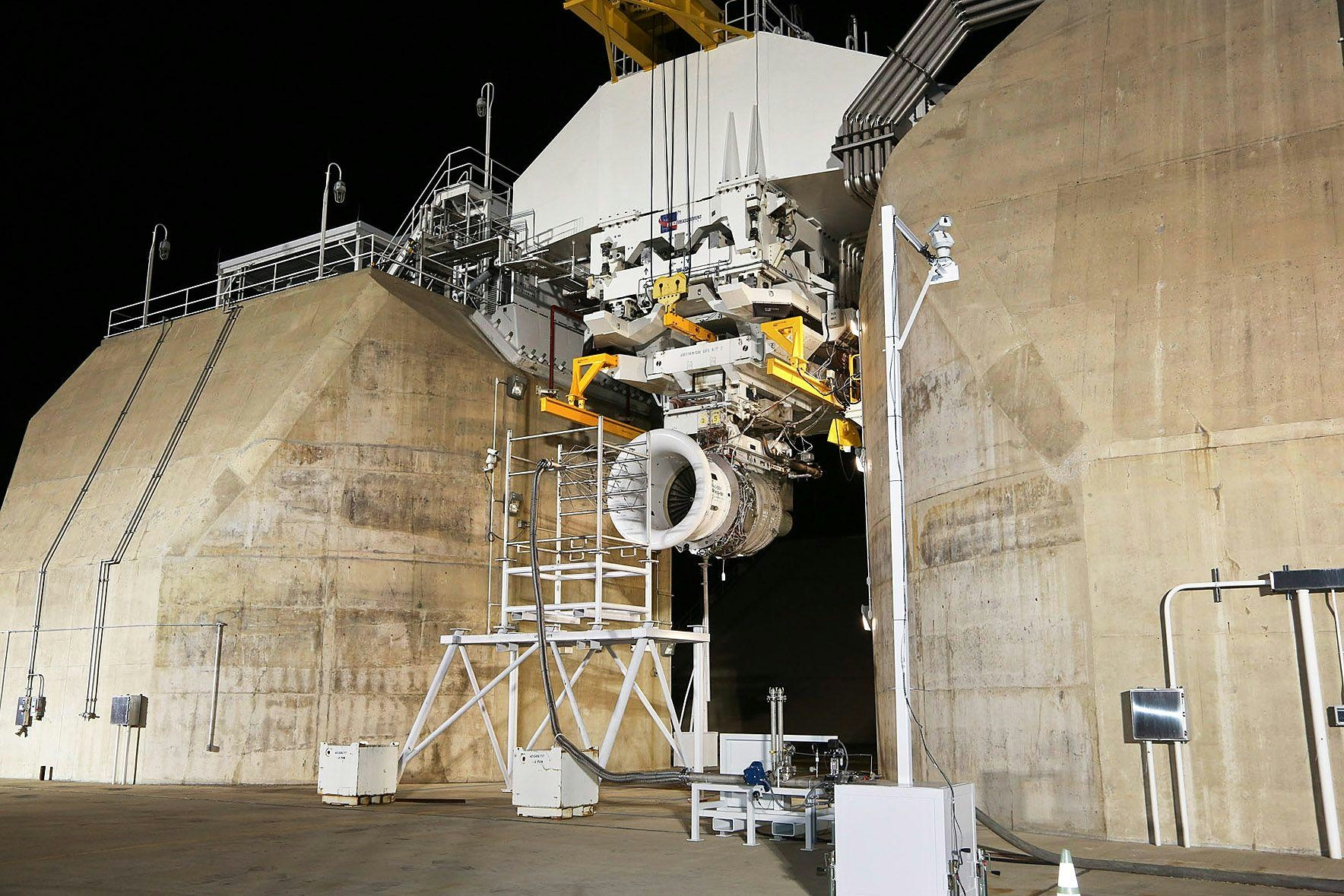
Do Chickens Get Thrown Into Aircraft Engines?
Do Chickens Get Thrown Into Aircraft Engines?
For millions of air travelers in India, the primary concerns often revolve around flight schedules and ticket prices at major airports such as Delhi, Mumbai, and Bengaluru. However, behind every safe takeoff and landing lies a critical and longstanding safety procedure involving an unexpected element: the deliberate firing of dead chickens into jet engines. This practice, known as bird strike simulation, is not a myth but a globally mandated certification process designed to ensure that aircraft can withstand real-life bird collisions.
Origins and Purpose of Bird Strike Testing
The origins of this unusual test trace back to the 1950s, when British aerospace engineers at de Havilland sought a reliable method to simulate bird strikes on the ground. Their solution was the invention of the "chicken gun," a compressed-air cannon that fires whole, dead chickens at aircraft engines and windshields at speeds replicating those experienced during takeoff and landing. The mass and density of chickens closely resemble many bird species commonly encountered by aircraft, making them ideal for these high-impact tests.
Today, this method remains a cornerstone of aviation safety worldwide. Before any new engine model receives certification for commercial use, it must demonstrate the ability to safely "ingest" a large bird. The engine is required to contain all debris within its casing and either continue operating or shut down safely without catastrophic failure. Similarly, cockpit windshields must endure such impacts without cracking or shattering in a manner that could endanger pilots or depressurize the cabin.
Rising Bird Strike Incidents and Industry Response in India
This rigorous testing is particularly relevant in India, where bird strike incidents have been increasing. According to the Ministry of Civil Aviation, nearly 2,800 bird strike events were recorded at ten major airports between 2020 and mid-2025. The numbers have surged following the pandemic-related lull, with Delhi’s Indira Gandhi International Airport reporting the highest number at 695 incidents, followed by Mumbai and Bengaluru. Experts attribute this rise to the rapid recovery of flight operations combined with expanding urban development near airports, which disrupts bird habitats and draws wildlife into flight paths.
In response, Indian airports have implemented comprehensive Wildlife Hazard Management Plans aimed at mitigating these risks. However, the challenge extends beyond wildlife management. The aviation industry also faces broader pressures, including economic difficulties for independent insurance agencies, quality concerns with popular aircraft models such as the Airbus A320, and the need for advanced forging technologies to enhance component reliability. Recent incidents and market reactions—such as declines in Airbus’s share price—underscore the critical importance of stringent safety protocols and regular maintenance checks. These measures are essential not only to prevent bird strikes but also to ensure that no foreign objects, including birds or debris, compromise engine integrity.
As aerospace competitors respond with improved technology and stricter quality control, the industry’s commitment to rigorous testing—chickens and all—remains vital. This blend of tradition, innovation, and vigilance continues to uphold modern air travel as one of the safest modes of transportation.
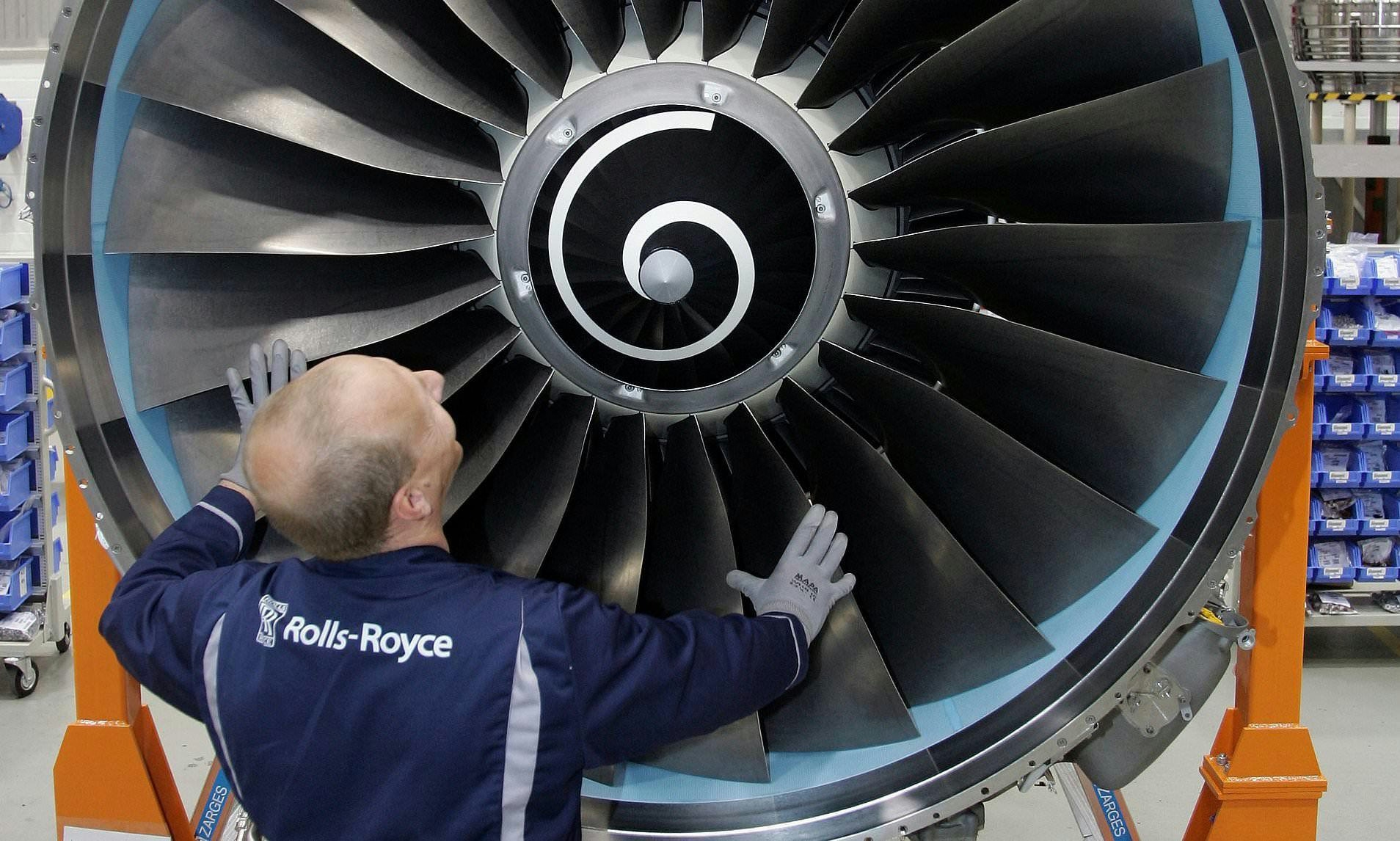
Rolls-Royce Begins Engine Testing for U.S. Army MV-75 Aircraft
Rolls-Royce Advances Engine Testing for U.S. Army MV-75 Aircraft
Rolls-Royce has initiated testing of its AE 1107F engines at its Indianapolis facility, marking a pivotal development in the delivery of prototypes for the U.S. Army’s MV-75 Future Long Range Assault Aircraft (FLRAA) program. Each MV-75 FLRAA will be equipped with two AE 1107F engines, a next-generation propulsion system designed to significantly enhance speed, range, and combat effectiveness for Army aviation units.
The AE 1107F Engine: A Proven Powerplant for Modern Warfare
The AE 1107F represents the latest advancement in a family of engines that have reliably served the U.S. military for decades. Rolls-Royce highlights the engine’s high power density, cyber-compliant controls, and survivability features tailored to meet the demands of contemporary combat environments. The AE series has accumulated over 90 million flight hours across 16 commercial and military platforms, with approximately 80 percent of components standardized across variants. This common core architecture is intended to mitigate technical risks, accelerate development timelines, and simplify maintenance and supply chain logistics.
Candice Bineyard, director of U.S. business development and future programs for Rolls-Royce Defense, underscored the significance of the current testing phase. She stated, “We continue working closely with the U.S. Army and our industry partners to deliver an ultra-modern propulsion solution with proven, low-risk AE 1107F engines and a fully integrated system design. Engine testing represents the next critical milestone in bringing this revolutionary capability to our service members.”
Strategic Investment and Industry Implications
Testing is being conducted at Rolls-Royce’s advanced manufacturing campus in Indianapolis, the company’s largest facility in the United States. Over the past decade, Rolls-Royce has invested more than $1 billion in technology upgrades, facility enhancements, and testing capabilities at this site to support key U.S. Department of Defense programs, including the MV-75 FLRAA.
The AE 1107 engine family is already extensively deployed, powering multiple variants of the V-22 Osprey used by the U.S. Marine Corps, Navy, and Air Force. Additionally, a marinized version known as the MT7 powers the U.S. Navy’s Ship-to-Shore Connector landing craft.
While the MV-75 FLRAA program aims to replace parts of the Army’s existing rotary-wing fleet with longer-range aircraft, Rolls-Royce faces ongoing challenges. The company must ensure the successful execution of upgrades and meet durability expectations across its Trent engine family. Nevertheless, market sentiment remains optimistic, supported by a recent £200 million share buyback and steady progress in defense engine testing.
Competitors are closely monitoring Rolls-Royce’s developments, particularly as the company seeks to regain market share in the Boeing 787 segment by leveraging successful upgrades to the Trent 7000 engine. As testing of the AE 1107F advances, Rolls-Royce is positioning itself to strengthen its foothold in both military and commercial aerospace sectors.
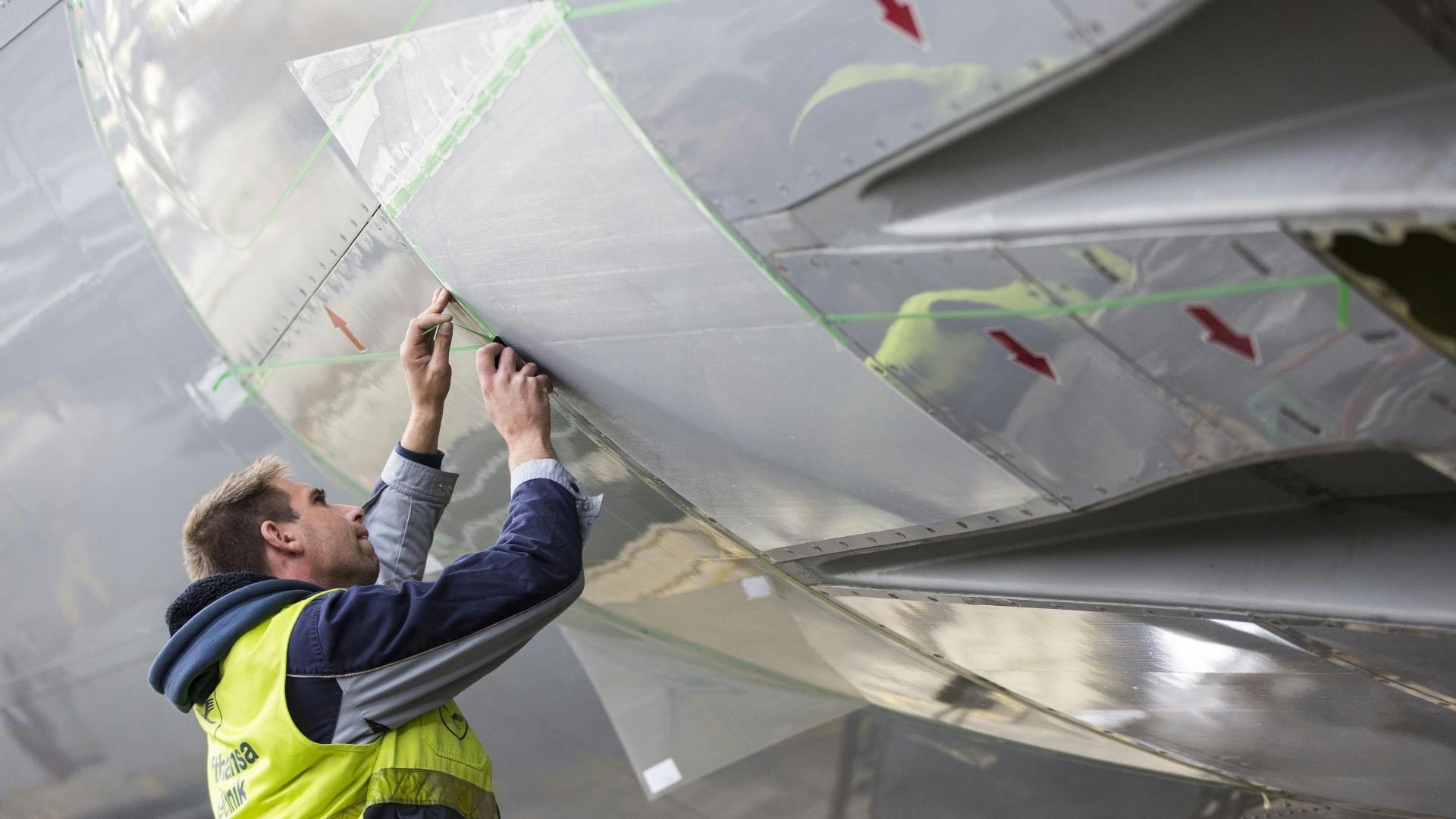
SWISS Renews Boeing 777 Component Support Agreement with LHT
SWISS Renews Boeing 777 Component Support Agreement with Lufthansa Technik
Swiss International Air Lines (SWISS) has extended its exclusive component support agreement with Lufthansa Technik (LHT) for its Boeing 777 fleet, continuing a decade-long technical partnership. The renewed contract, effective from January, spans ten years and encompasses all twelve Boeing 777-300ER aircraft operated by SWISS. This extension guarantees the uninterrupted provision of Lufthansa Technik’s Total Component Support (TCS) services, which include comprehensive maintenance, repair, and overhaul (MRO), access to a global spare parts inventory, and integrated logistics solutions.
Strengthening Operational Resilience through Partnership
A key element of the agreement remains the dedicated homebase stock of components maintained at SWISS’s Zurich hub, ensuring rapid availability of parts and bolstering operational reliability. Lufthansa Technik already supports a significant portion of the SWISS fleet, including Airbus A320ceo, A320neo, A330, A340, and the expanding A350 fleet. The renewal of the Boeing 777 component support contract further consolidates this extensive collaboration.
Claus Bauer, Head of Technical Fleet Management at SWISS, highlighted the strategic importance of the partnership, stating, “Based on our very positive experience with Lufthansa Technik’s reliable component support across a large part of our fleet, we are confident that we have once again selected the best possible partner to meet our high standards. We are pleased to extend this trusted cooperation, particularly in the context of ongoing global supply chain challenges, where Lufthansa Technik’s support is essential to ensuring component availability and safeguarding our long-term operational performance.”
Industry Context and Technological Innovation
The renewal occurs amid significant shifts in the aviation supply chain. Boeing’s recent $4.7 billion acquisition of Spirit AeroSystems represents a major move toward vertical integration, aimed at resolving quality control issues and production delays. While this development has been positively received by the market, as reflected in Boeing’s rising stock price, it introduces new complexities for airlines like SWISS that depend on external partners such as Lufthansa Technik for component support. The acquisition is anticipated to influence Boeing’s production schedules and quality assurance processes, particularly for the MAX 7 and 777X programs, with potential implications for component availability and support services across the industry.
Concurrently, Airbus is adjusting its delivery targets in response to technical challenges, intensifying competition in the widebody aircraft market. Boeing’s goal of achieving positive cash flow by 2026 may further enhance its market position, yet ongoing supply chain uncertainties underscore the critical importance of robust support agreements for airlines.
Beyond component maintenance, Lufthansa Technik contributes to SWISS’s operational efficiency through innovations such as AeroSHARK, a sharkskin-inspired surface technology developed in partnership with BASF Coatings. All twelve SWISS Boeing 777s are equipped with AeroSHARK, which reduces aerodynamic drag and improves fuel efficiency by approximately one percent. SWISS was among the first airlines worldwide to implement this technology.
As the aviation sector adapts to evolving supply chain dynamics and heightened competition, SWISS’s renewed collaboration with Lufthansa Technik positions the airline to uphold high operational standards and resilience across its long-haul fleet.

MD Aircraft Receives 20 Pre-Orders for eViator from UrbanLink
MD Aircraft Secures 20 Pre-Orders for eViator from UrbanLink
MD Aircraft GmbH (MDA) has announced a significant agreement with UrbanLink Air Mobility, which has signed letters of intent for 20 pre-orders of MDA’s flagship electric aircraft, the eViator. This commitment raises MDA’s global pre-order count to 110 aircraft, underscoring strong international demand and reinforcing the company’s growing influence in the sustainable regional aviation sector.
Strategic Partnership and Market Expansion
UrbanLink Air Mobility plans to integrate the eViator as a core element of its future network, aiming to provide zero-emission regional connectivity across key markets. Ed Wegel, Founder and CEO of UrbanLink, emphasized the alignment between the two companies’ visions, stating that the pre-orders reflect a firm commitment to sustainable operations and set a new industry standard. For MD Aircraft, the partnership represents a crucial step in expanding market access beyond Europe, particularly targeting the U.S. and Caribbean regions. Gregor Müller, CEO of MD Aircraft, highlighted UrbanLink’s expertise as instrumental in accelerating the company’s presence in these markets and strengthening its foundation for zero-emission regional aviation.
Positioning Amidst Growing Competition
Headquartered in Germany, MD Aircraft focuses on developing quiet, cost-efficient, and environmentally responsible electric aircraft optimized for short-haul routes. The MDA1 eViator is designed to transform regional aviation through advanced all-electric propulsion and a customer-centric operating model aimed at reducing emissions and operating costs. However, the company faces increasing competition as the electric aviation sector gains momentum. Rivals such as Smartflyer and Boeing-backed Evio are advancing their own electric aircraft programs, while established manufacturers like Bombardier, with its recent Global 6500 deal, and Pegasus, active in Germany, add further competitive pressure. These players may accelerate their development of electric or hybrid-electric aircraft in response to MDA’s expanding order book.
Despite these challenges, UrbanLink’s pre-orders have been met with a positive market response, signaling growing confidence in the viability of electric commuter aircraft. Nonetheless, broader market acceptance and the ability to scale production remain critical challenges for MDA and its competitors as the industry moves toward sustainable regional air mobility.
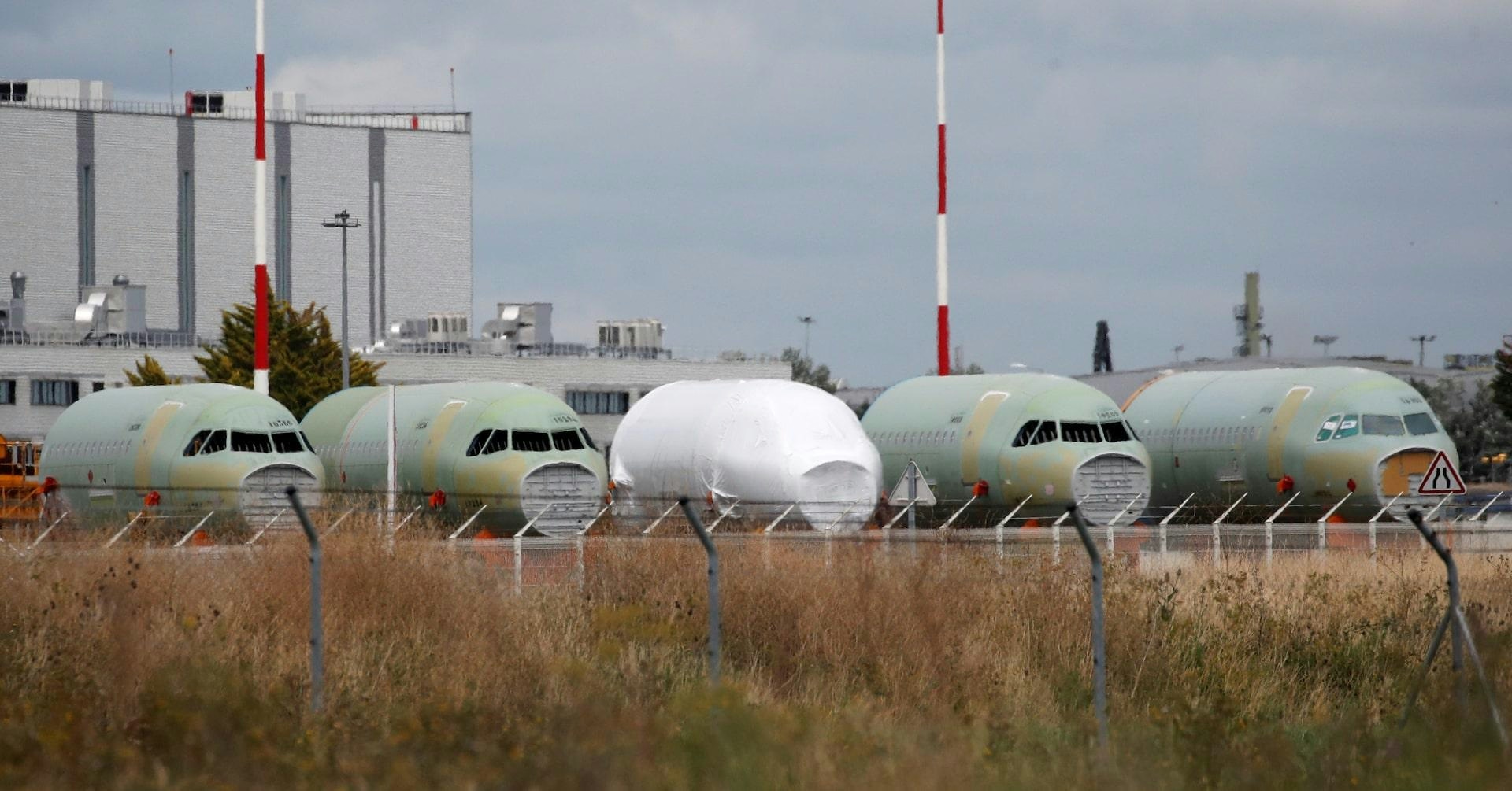
Regulator Orders Inspections of Select Airbus A320s Over Fuselage Flaw
Regulator Orders Inspections of Select Airbus A320s Over Fuselage Flaw
European Aviation Authority Issues Inspection Mandate
European aviation regulators have mandated inspections of fuselage panels on numerous Airbus A320-family aircraft following the identification of a production defect at a Spanish supplier. The European Union Aviation Safety Agency (EASA) has issued preliminary instructions requiring airlines to verify the thickness of specific panels located near the front of the aircraft. This inspection must be completed within six months, or sooner if the panels have previously undergone repairs. The directive applies to 177 aircraft currently in service and an additional 451 jets still in production at Airbus.
EASA described the inspections as necessary to address a “potentially unsafe condition” related to panels exhibiting incorrect thickness combined with a history of repairs. Although Airbus has maintained that the industrial flaw does not compromise safety, the issue has nonetheless disrupted deliveries of A320neo jets and compelled the manufacturer to reduce its 2025 delivery target by approximately 4%, to around 790 aircraft.
Industry Response and Delivery Challenges
The safety directive follows Airbus’s own technical instructions and establishes a clear timeline for airlines to resolve the problem. Despite this, some carriers remain reluctant to accept new aircraft deliveries until the affected panels are replaced. Several airlines are reportedly seeking compensation or enhanced warranty terms in response to the defect. Lufthansa, for instance, has announced plans to inspect 11 recently delivered A320-family aircraft.
The delivery delays have intensified the challenge for Airbus as it balances addressing the fuselage flaw with maintaining its financial forecasts. The company is currently evaluating the broader implications of the issue, amid concerns from investors and customers regarding the discrepancy between reduced delivery targets and financial projections.
Despite these setbacks, Airbus has historically accelerated deliveries in the final weeks of the year. Industry sources indicate that while deliveries were below average in early December, they have recently gained momentum. Airbus declined to comment on ongoing commercial negotiations or delivery figures ahead of its full-year report, which is scheduled for release on January 12.
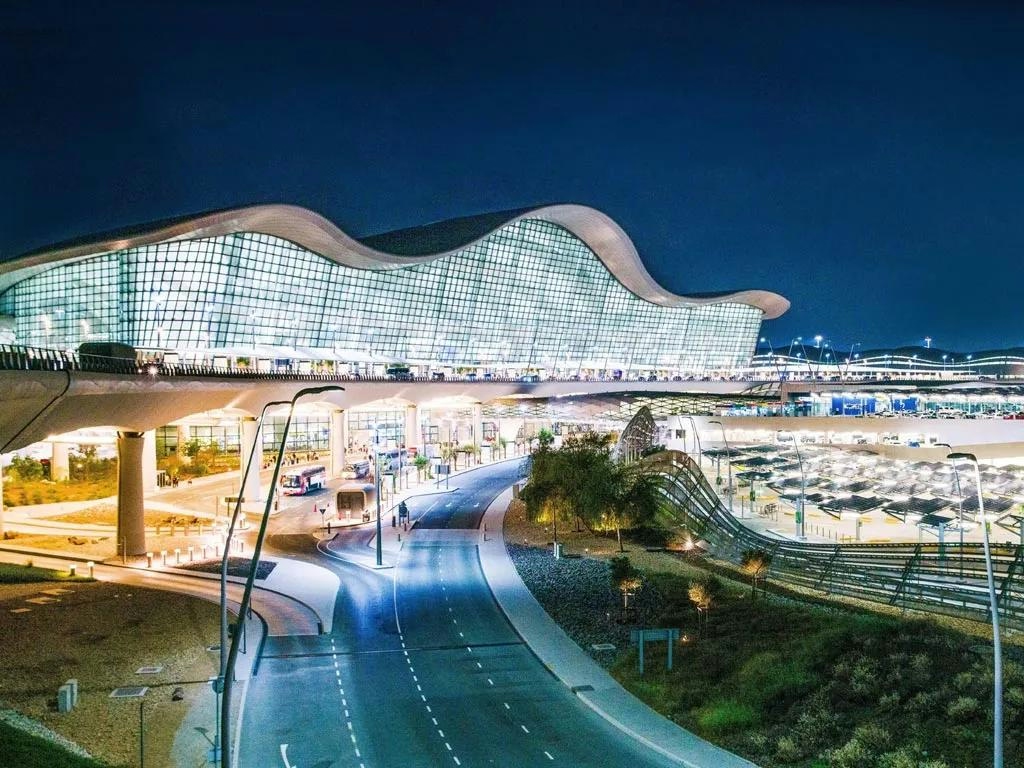
UAE Airports Adopt AI to Manage Rising Passenger Traffic
UAE Airports Embrace Artificial Intelligence to Address Rising Passenger Traffic
Airports across the United Arab Emirates are increasingly turning to artificial intelligence (AI) to manage surging passenger volumes, enhance operational efficiency, and reduce costs. This strategic shift comes amid record-breaking passenger numbers and evolving industry demands. However, experts caution that the integration of AI faces significant hurdles, including fragmented legacy systems and workforce adaptation challenges.
Advancing AI Integration in UAE Airports
In a recent development, Dubai Airports Company announced the deployment of an AI-powered turnaround solution at Dubai International Airport (DXB) in collaboration with Assaia, a technology provider with a presence in major global hubs such as New York JFK, Rome Fiumicino, and Seattle-Tacoma. This initiative aims to streamline aircraft movements and improve overall operational efficiency.
Similarly, Abu Dhabi Airports has partnered with technology firm SITA to explore AI-driven management systems at Zayed Airport. The objective is to anticipate operational disruptions and optimize resource allocation, thereby enhancing airport performance.
These initiatives coincide with a notable increase in passenger traffic. DXB recorded 24 million passengers in the third quarter of 2025, marking a 2% year-on-year growth. Meanwhile, Abu Dhabi Airports processed nearly 16 million passengers in the first half of 2025, reflecting a 13% increase compared to the previous year.
Potential Benefits and Industry Challenges
AI applications in airport operations are expected to deliver substantial efficiency improvements across various domains, including demand forecasting, biometric identification, autonomous baggage handling, and terminal maintenance. Usman Tahir, head of aviation at Roland Berger Middle East, emphasized that AI can significantly reduce gate taxi-in times, leading to lower fuel consumption and fewer delays. Supporting this, a Synaptic Aviation report highlighted that AI-driven gate readiness tracking reduced delays by 21% at a US airport, generating savings exceeding $40,000 per gate annually.
Sal Salman, president of Synaptic Aviation, remarked that these operational efficiencies can be realized immediately without necessitating major infrastructure overhauls.
Despite these promising prospects, global readiness for AI adoption remains limited. According to Roland Berger, only one-third of airport executives worldwide feel adequately prepared to implement AI solutions. In the Middle East and Africa, none of the surveyed executives rated their airports as having “very high readiness” for digital transformation. Leo Levit, chairman of ONVIF, pointed out that the absence of unified data models and shared standards complicates the integration of AI with existing legacy systems.
Workforce Implications and Market Dynamics
The transition to AI also presents significant workforce challenges. The UAE’s AI Strategy 2031 projects that nearly half of the national workforce will require upskilling by 2030 to keep pace with technological advancements. As AI automates an increasing number of airport functions, up to 30% of jobs could be at risk, underscoring the urgency of comprehensive retraining programs.
Investor interest in AI infrastructure has surged despite concerns over inflated valuations and the possibility of an AI bubble. Globally, technology giants such as Alphabet, Meta, and Oracle are intensifying their AI investments to maintain competitive advantage.
The UAE’s innovative approach to AI, exemplified by projects like AI-powered racecars for autonomous driving technology, is establishing new standards in safety, governance, and innovation. This leadership position may influence global benchmarks and encourage other nations to adopt similarly advanced AI strategies.
As UAE airports continue to integrate AI technologies, the sector confronts a complex landscape of opportunities and challenges. The successful navigation of these developments has the potential to reshape the global aviation industry.
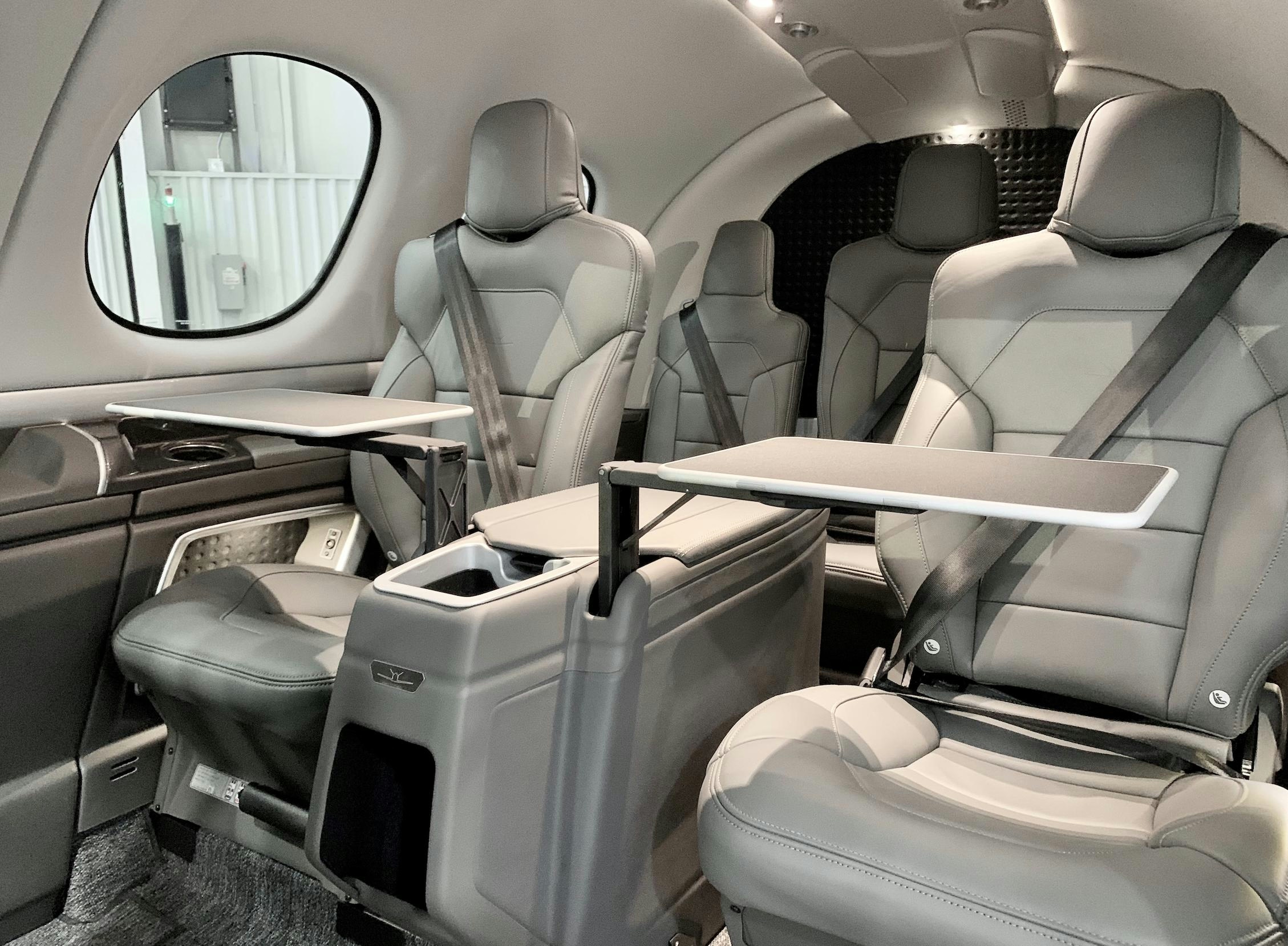
The Vision Jet and the Future of Personal Aviation
The Vision Jet and the Future of Personal Aviation
The Cirrus Vision Jet is transforming the landscape of personal aviation by combining luxury, cutting-edge technology, and unparalleled safety features into the world’s first single-engine personal jet. Cirrus Aircraft offers comprehensive support to owners throughout the entire ownership experience, encompassing flight training, financing, and ongoing maintenance, thereby ensuring a seamless and premium journey from acquisition to operation.
Luxury Meets Functionality
The Vision Jet is distinguished by its spacious cabin, the largest in its class, made possible by a carbon fiber fuselage that maximizes interior volume. Passengers enjoy ample headroom and legroom, complemented by panoramic windows that enhance the sense of openness. The cabin’s design elevates travel into a comfortable and productive environment, with senior community manager Dale Huffstetler likening the experience to that of a luxury automobile. He notes, “The cabin is extremely roomy, particularly for the size of the aircraft. There are copious amounts of leg room.”
The interior features high-end leather seating and modern amenities such as charging ports and in-flight entertainment systems, making it a preferred choice for both families and business travelers. The cabin is thoughtfully equipped to support work and relaxation alike, with an entertainment display that integrates with personal devices and a center console that serves as a functional workspace. Additional comforts include a pressurized cabin suitable for high-altitude flights, accent lighting, rear climate controls, and Gogo InFlight Wi-Fi, ensuring reliable connectivity throughout the journey.
Pioneering Safety Innovations
Cirrus has established new benchmarks in aviation safety through pioneering features like the Cirrus Airframe Parachute System (CAPS) and the Safe Return Emergency Autoland. CAPS, an FAA-approved whole-aircraft parachute system, can be deployed in emergencies to safely lower the entire jet to the ground. Huffstetler explains, “If the aircraft is broken, the Cirrus Airframe Parachute System is there in the event the aircraft cannot be landed safely.”
The Safe Return Emergency Autoland system, powered by Garmin technology, automatically lands the aircraft if the pilot becomes incapacitated, further enhancing safety and accessibility. These innovations have garnered significant industry recognition, including the prestigious Robert J. Collier Trophy, and have set a new standard for personal aviation safety.
Navigating Industry Challenges
Despite its technological advancements and enhanced user experience, the Vision Jet and the broader personal aviation sector face considerable challenges. Regulatory changes, such as the United Kingdom’s extension of Air Passenger Duty to a wider range of business jet users, are driving up operational costs. Moreover, efforts to meet sustainable aviation fuel (SAF) targets are complicated by fragmented and costly government policies across Europe, sparking debate over the financial viability and effectiveness of SAF mandates within business aviation.
These pressures have led some competitors, particularly in the electric vertical takeoff and landing (eVTOL) sector, to pivot away from passenger services toward logistics and drone operations. This strategic shift reflects a search for more sustainable business models amid evolving market conditions and regulatory landscapes.
Looking Ahead
As the Vision Jet continues to redefine luxury, safety, and connectivity in personal aviation, the industry must also confront regulatory and environmental challenges. The future of personal flight will hinge not only on technological innovation but also on the ability to navigate a complex and shifting policy and market environment.
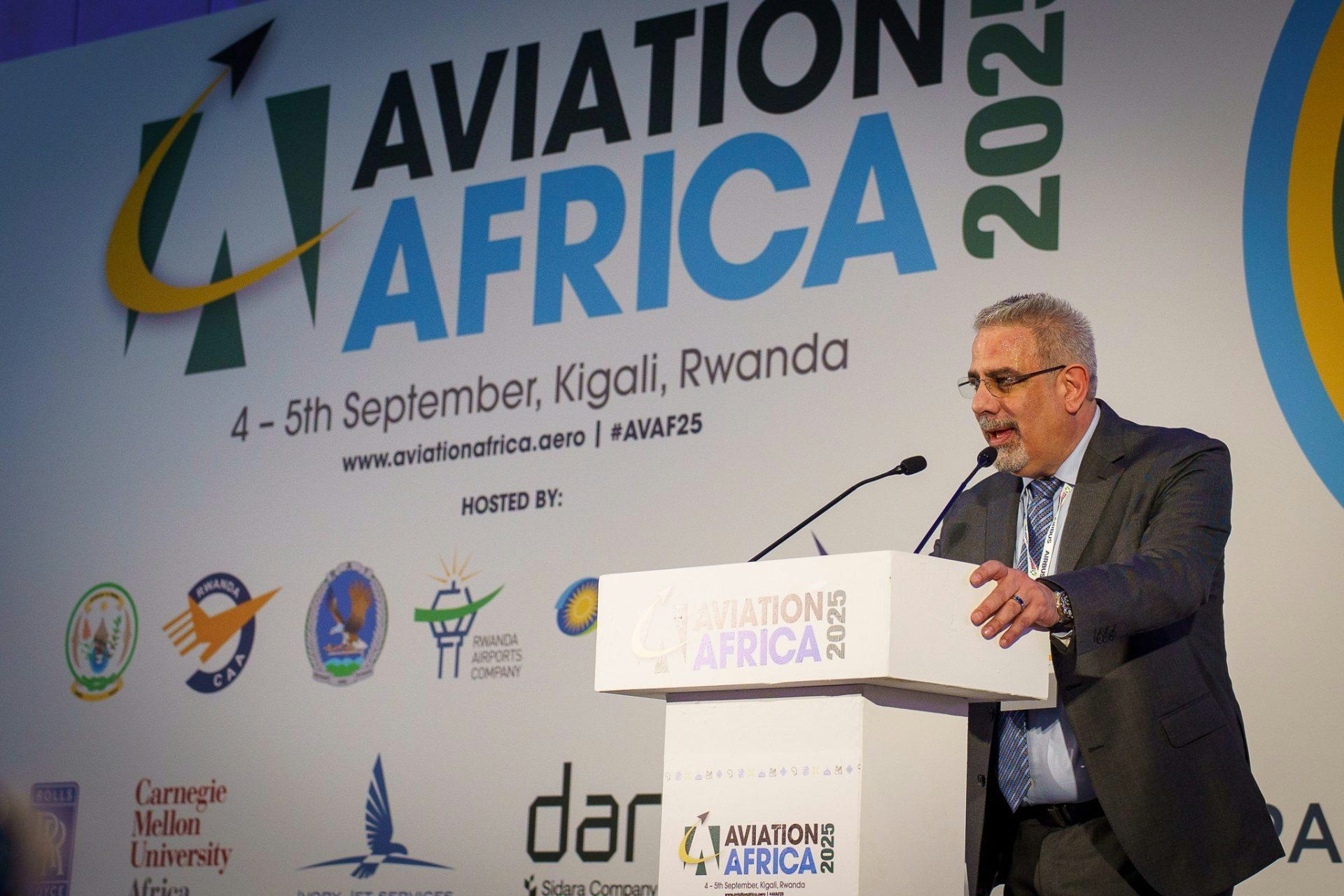
IATA Identifies Africa as the Most Expensive Region for Airline Operations
IATA Identifies Africa as the Most Expensive Region for Airline Operations
The International Air Transport Association (IATA) has designated Africa as the most costly region worldwide for airline operations, attributing this status to elevated jet fuel prices, excessive taxes and fees, and a range of operational challenges that collectively drive up expenses for carriers across the continent.
Cost Drivers and Operational Challenges
IATA reports that African airlines incur unit costs nearly double the global average, standing at $140 per available tonne-kilometre compared to approximately $70 globally. A significant contributor to this disparity is the price of jet fuel, which is on average 17% higher in Africa. This premium is largely due to limited local refining capacity, inefficiencies in supply chains, and a heavy dependence on imported fuel. Consequently, fuel expenses can represent up to 40% of an African airline’s operating costs, markedly higher than the 25% typical in other regions.
In addition to fuel costs, taxes and fees impose a substantial burden on African carriers. These charges account for between 12% and 15% of total costs, with statutory levies in some markets adding $60 to $80 to a base fare of $100. Such financial impositions effectively render air travel a luxury for many Africans. Airport and air navigation fees are also notably higher, exceeding those in other regions by 10 to 12%.
Kamil Alawadhi, IATA’s Regional Vice President for Africa and the Middle East, emphasized these challenges during the IATA Global Media Day. He highlighted that African airlines operate on a razor-thin net profit margin of just 1.3%, the lowest worldwide. On a per-seat basis, African carriers generate only $1.20 in revenue, compared to a global average of $7.70.
The operational difficulties are further compounded by aging fleets, with African aircraft averaging five years older than the global norm. This results in increased maintenance requirements and higher fuel consumption. The scarcity of local Maintenance, Repair, and Overhaul (MRO) facilities forces airlines to procure parts and services from overseas at a premium cost.
Financial Constraints and Market Fragmentation
A critical financial obstacle facing African airlines is the issue of blocked funds. As of late 2025, Africa accounts for approximately 79%—or $954 million—of the world’s total blocked airline funds. Government restrictions on converting local earnings into hard currency severely limit airlines’ ability to meet dollar-denominated expenses such as aircraft leases, fuel purchases, and insurance premiums. This situation creates significant cash flow risks and often compels airlines to reduce or suspend services to affected countries.
Market fragmentation and protectionist policies further impede the development of the continent’s aviation sector. Only 19% of intra-African routes offer direct flights, forcing many passengers to transit through Europe or the Middle East to reach other African destinations. The majority of African airlines are small operators lacking the economies of scale necessary to compete effectively on a global stage.
Initiatives and Future Outlook
In response to these persistent challenges, airlines and regional associations are forming task forces and exploring collaborative strategies aimed at improving safety standards and reducing operational costs. IATA plans to introduce new initiatives focused on safety and efficiency at the upcoming Focus Africa event in April 2026, targeting the structural issues that have hindered the continent’s aviation progress.
Despite forecasts projecting a 6.0% growth in air traffic across Africa in 2026—outpacing the global average—the industry continues to struggle with high costs and minimal profitability. This underscores the pressing need for coordinated reforms to unlock the sector’s full potential.
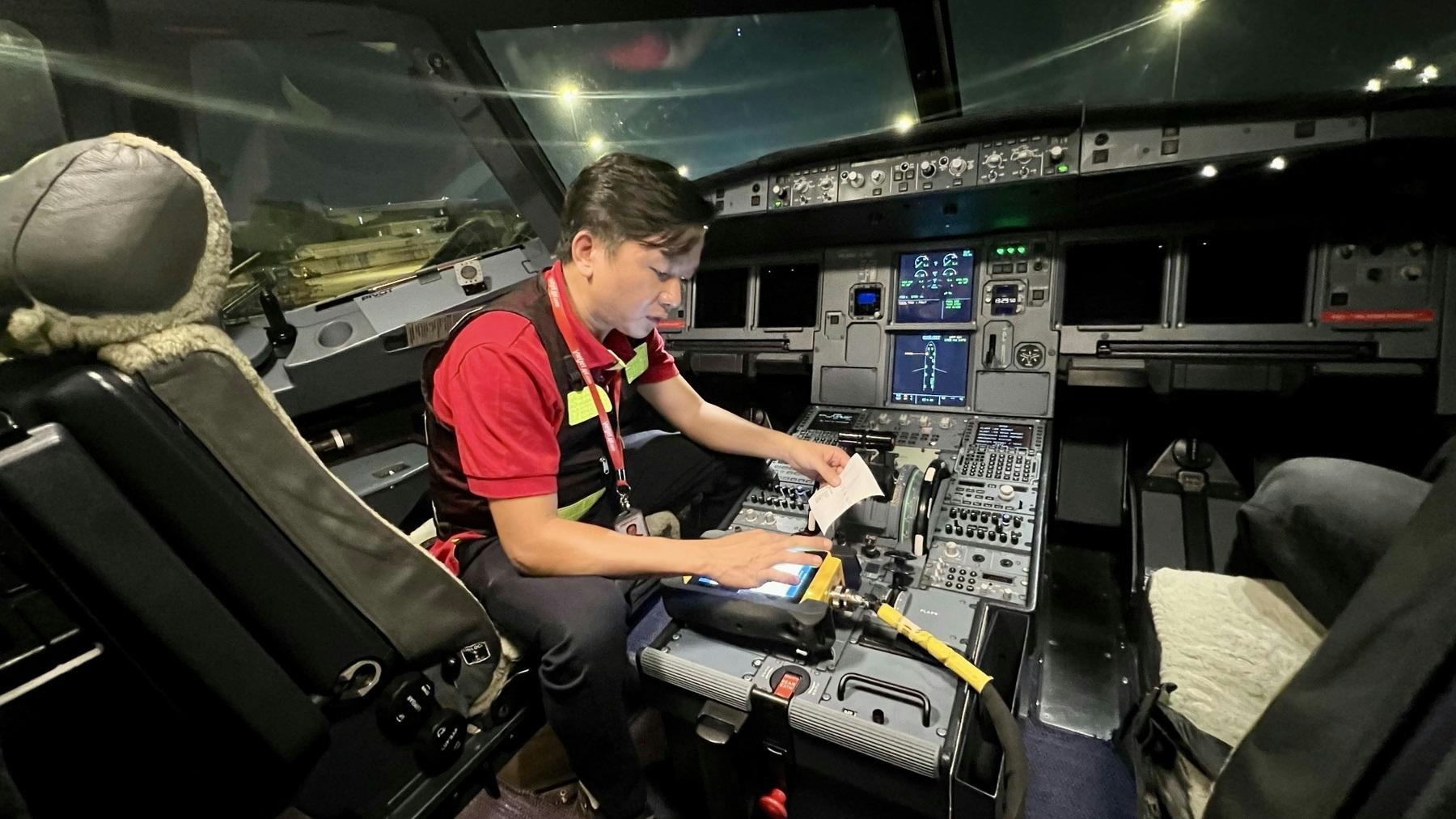
Inside Vietjet’s 32-Hour Emergency Response to Keep Airbus Fleet Operational
Inside Vietjet’s 32-Hour Emergency Response to Keep Airbus Fleet Operational
In late November, the global aviation industry faced an urgent crisis when Airbus issued a critical technical alert at 11:00 p.m. on November 28. The alert identified a serious software glitch affecting over 6,000 Airbus A319, A320, and A321 aircraft. The European Union Aviation Safety Agency (EASA) swiftly responded with a mandatory Emergency Airworthiness Directive (EAD), requiring all operators to update or replace the ELAC flight-control software by 6:59 a.m. on November 30. This directive addressed a rare but significant risk: under certain conditions, solar radiation could interfere with the software, potentially causing uncommanded nose-down inputs, posing a safety hazard.
In Vietnam, the directive impacted 81 aircraft, with Vietjet operating 69 of them. The airline confronted an unprecedented 32-hour technical challenge to keep its fleet operational and minimize disruption. This effort was part of a broader industry-wide scramble as airlines worldwide dealt with grounded flights and complex logistical hurdles. The incident also triggered notable market reactions, including a sharp decline in Airbus shares and a public apology from the manufacturer for the inconvenience caused.
Rapid Mobilization and Emergency Operations
Upon receiving the alert, Vietjet immediately activated its Emergency Response Committee, mobilizing teams across engineering, flight operations, scheduling, and technology. Utilizing its AMOS maintenance management system, which integrates big data and artificial intelligence, the airline conducted a real-time assessment of its fleet. This enabled the identification of aircraft configurations, locations, and operational constraints. Contingency plans were swiftly developed to maintain network stability, including aircraft redeployment and schedule optimization aimed at minimizing passenger disruption.
The operation faced significant logistical challenges. Airbus estimated that each software update would require two to three hours per aircraft, specialized equipment was limited, and the affected aircraft were dispersed across multiple countries. Airlines worldwide adopted an “all hands on deck” approach, with some competitors collaborating and pooling resources to address the issue promptly.
Breakthrough on the Hangar Floor
A pivotal moment occurred in Da Nang, where Vietjet engineer Nguyen Van Trung, leveraging over 15 years of experience, completed a full ELAC software update in just 45 minutes without omitting any mandatory safety procedures. The software update process is inherently complex, involving verification, standardization, testing, and cross-checking for each aircraft’s unique configuration. Trung emphasized, “Nothing can be skipped. But experience allows you to know exactly where time can be optimized—and where it absolutely cannot.”
The first aircraft to complete the update, VN-A644, represented a decisive breakthrough. The optimized 45-minute procedure was immediately standardized and disseminated to engineering teams at Noi Bai, Tan Son Nhat, Da Nang, and international stations, significantly accelerating progress across the fleet.
Technology, Teamwork, and Industry Collaboration
In addition to software updates, Vietjet prepared hardware contingency measures by pre-positioning ELAC units from grounded aircraft for immediate replacement if necessary. The airline also received support from Vietjet Thailand and other carriers, including Vietnam Airlines and Bamboo Airways, which provided additional equipment to scale the operation.
Digitalized technical documentation accessible on iPads, standardized software libraries, and real-time fleet visibility enabled Vietjet to compress administrative timelines while maintaining full compliance with Airbus and EASA safety requirements. Through rapid mobilization, technological innovation, and industry collaboration, Vietjet successfully navigated one of the most challenging operational crises in its history, ensuring passenger safety and network continuity amid a global aviation emergency.

The Five Engines Used on Airbus A320 Family Aircraft
The Five Engines Powering the Airbus A320 Family
The Airbus A320 family has established itself as a cornerstone of commercial aviation, celebrated for its technological innovation and widespread adoption. Since its introduction in 1984 and first flight in 1987, the A320 series has become the world’s best-selling commercial aircraft family, surpassing the Boeing 737 in total orders by 2019. With over 19,000 orders and nearly 12,000 deliveries, the aircraft’s success is closely linked to its diverse engine options, which have played a pivotal role in its global appeal and operational versatility.
Engine Options and Their Evolution
From the beginning, Airbus adopted a strategy of offering customers a choice of engines, a decision that has significantly influenced the A320’s development. The original A320ceo (“current engine option”) models were equipped with either the CFM56-5 series from CFM International or the V2500 from International Aero Engines (IAE). More recently, the introduction of the A320neo (“new engine option”) and A321neo variants brought advanced powerplants into service: the CFM LEAP and Pratt & Whitney PW1100G engines. These newer models promise enhanced fuel efficiency and reduced emissions, aligning with the aviation industry’s increasing focus on sustainability.
CFM56-5A: The Original Workhorse
The CFM56-5A engine, developed by CFM International—a joint venture between General Electric and Safran—powered the A320’s maiden flight. Building upon earlier CFM56 models, the -5A variant offered increased thrust and incorporated advanced materials. It first powered the A320-100, the family’s initial variant, which entered service in 1988, followed by the more widely adopted A320-200. The CFM56 series has since become the most extensively used commercial jet engine globally, with over 33,000 units produced and more than one billion flight hours logged. While the majority of these engines power Boeing 737 aircraft, over 10,000 have been installed on Airbus models, underscoring their reliability and performance.
IAE V2500: Efficiency and Reliability
The V2500 engine emerged from a consortium formed in 1983, comprising Pratt & Whitney, Rolls-Royce, Japanese Aero Engine Corporation, MTU Aero Engines, and Fiat. Certified in 1988, the V2500 provided A320 operators with an alternative to the CFM56, offering comparable thrust but enhanced fuel efficiency and lower emissions due to its higher bypass ratio. Its quieter operation also made it well-suited for airports with stringent noise regulations. Over time, the V2500 has become a mainstay of the A320 fleet, valued for its dependable performance and operational economy.
New Generation Engines: CFM LEAP and Pratt & Whitney PW1100G
The advent of the A320neo and A321neo introduced two new engine options: the CFM LEAP and the Pratt & Whitney PW1100G. Both engines represent significant technological advancements, delivering marked improvements in fuel consumption, emissions reduction, and noise abatement. These developments reflect the broader industry commitment to environmental sustainability. However, the integration of these advanced engines has not been without challenges. Technical difficulties and supply chain disruptions have caused delays and increased maintenance demands, complicating production schedules for both Airbus and its airline customers.
Industry Challenges and Competitive Dynamics
Engine reliability and availability have become critical concerns for Airbus amid ongoing global supply chain disruptions and labor shortages. These factors have contributed to slower aircraft deliveries and heightened maintenance requirements. Concurrently, Boeing, Airbus’s principal competitor in the narrow-body aircraft market, is grappling with its own engine and certification challenges. This competitive environment intensifies the pressure on both manufacturers as they strive to meet growing market demand.
Despite these obstacles, the A320 family’s adaptability and broad range of engine options have solidified its position as a leader in commercial aviation. The aircraft continues to serve airlines worldwide, navigating decades of technological change and evolving industry demands.

Aircraft Leasing Market Expected to Grow Amid Changing Tourism and Fleet Demands
Aircraft Leasing Market Set for Growth Amid Shifting Tourism and Fleet Demands
The global aircraft leasing market is on track for significant expansion, driven by changing tourism patterns and airlines’ increasing need for operational flexibility. Valued at $87.97 billion in 2024, the market is expected to grow to $94.36 billion in 2025 and reach $155.61 billion by 2032, representing a compound annual growth rate (CAGR) of 7.39%. As passenger traffic rises and the tourism sector becomes more dynamic, leasing has emerged as a crucial strategy for airlines to swiftly adjust to fluctuating demand while advancing sustainability goals.
Operational Flexibility and Fleet Expansion
Airlines, especially those operating in major tourist destinations and regions with pronounced seasonal traffic, are turning to leasing to manage both long-term growth and short-term capacity fluctuations. Leasing enables carriers to expand or reduce their fleets without the burden of substantial upfront capital expenditure, offering agility in highly competitive and rapidly evolving markets. Both lessors and airlines are increasingly utilizing advanced asset management systems and data analytics to optimize fleet deployment and respond effectively to changing travel trends.
Freighter Conversions and the Rise of E-Commerce
A significant development reshaping the leasing landscape is the growing demand for narrowbody freighter conversions. This trend is largely propelled by the rapid expansion of the e-commerce sector and increased cargo volumes linked to tourism. Airlines are converting passenger aircraft into freighters to capitalize on new revenue opportunities, allowing lessors to diversify their portfolios and serve both passenger and cargo operators amid expanding global trade and travel.
Technological Innovation and Sustainability Initiatives
Digital transformation is further influencing the aircraft leasing sector. Innovations in digital asset management and predictive analytics are enhancing lease negotiations, minimizing aircraft downtime, and improving fleet utilization. Concurrently, lessors are increasingly offering green financing options, such as green bonds, to support environmentally sustainable leasing solutions. The industry’s commitment to sustainable aviation is reflected in the provision of more fuel-efficient aircraft and the integration of sustainable aviation fuel clauses in lease agreements, assisting airlines in meeting stringent carbon reduction targets.
Emerging Challenges and Market Dynamics
Despite promising growth, the aircraft leasing market faces notable challenges. Aviation insurers predict rising insurance premiums starting in 2026, following an anticipated record year for large losses in 2025. This development could increase costs for leasing companies, necessitating strategic adjustments in pricing and risk management across the sector.
Furthermore, the regional aircraft fleet in the Middle East is projected to more than double by 2044, intensifying competition and demand for leasing services. Globally, the commercial aircraft fleet is also expected to double by the same year, prompting a comprehensive replacement cycle and a transition toward sustainable propulsion technologies. These evolving dynamics are likely to influence leasing strategies, profitability, and the types of aircraft in demand.
Outlook
As the aviation industry contends with rising demand, sustainability imperatives, and emerging risks, aircraft leasing is poised to remain a fundamental component of airline fleet management. The sector’s capacity to adapt to technological advancements, regulatory changes, and shifting market conditions will be pivotal in determining its future trajectory.
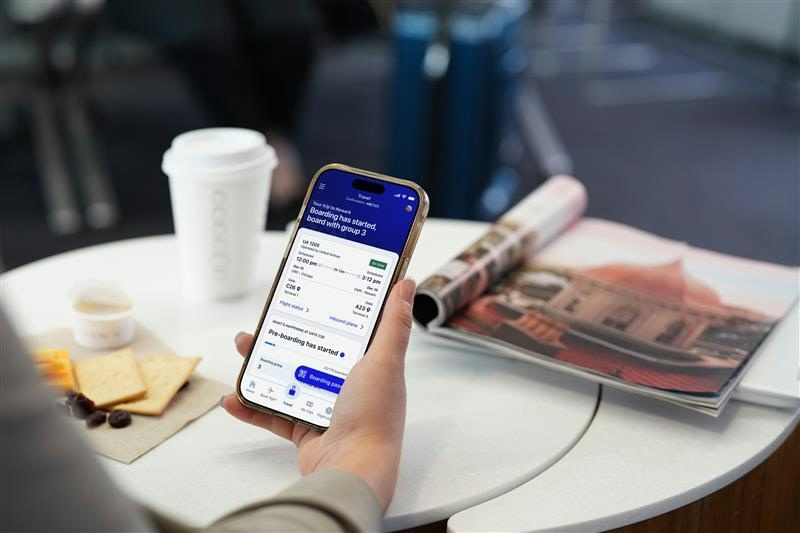
United Airlines Integrates AI into Mobile App
United Airlines Integrates AI into Mobile App
United Airlines has unveiled a significant update to its mobile application, incorporating artificial intelligence to enhance the overall travel experience. Launched on Tuesday, the revamped app introduces a range of AI-driven features designed to function as a comprehensive travel assistant. Among these are Virtual Gate, a tool that provides real-time boarding information, a locator for the nearest and most suitable United Club lounges, and live tracking of checked baggage.
Enhancing the Traveler’s Journey with Predictive Navigation
At the core of the update is a predictive navigation system that anticipates passengers’ needs throughout their journey. As departure time nears, the app automatically highlights boarding status and gate details. For travelers facing tight connections, it offers timely guidance to facilitate smooth transfers between flights. Upon arrival, the app delivers up-to-date local weather information and suggests ride-share options, aiming to simplify ground transportation arrangements.
This initiative aligns with a broader industry movement toward integrating AI and mobile technologies to provide more personalized and efficient travel services. Airlines are increasingly investing in digital tools that reduce stress and improve convenience, and United’s latest enhancements are expected to prompt competitors to accelerate their own adoption of AI-driven solutions.
Challenges and Regulatory Considerations
Despite the potential benefits, the integration of AI into travel applications presents notable challenges. Automation errors, such as inaccuracies in navigation prompts or baggage tracking, could disrupt the customer experience. Furthermore, the expanded use of personal data to power these AI features has attracted heightened regulatory scrutiny. Authorities are closely examining issues related to AI-based pricing models, data transparency, and consumer protection, raising important questions about how airlines manage and safeguard sensitive customer information.
United Airlines is positioning its AI-powered app as a new benchmark for digital travel assistance, aiming to deliver a smoother and more intuitive journey for its customers. As the airline industry continues to evolve, the interplay between technological innovation, operational reliability, and consumer trust will remain a critical focus.

Merlin Labs: AI Aviation Company with SPAC Downside Protection
Merlin Labs: AI Aviation Company with SPAC Downside Protection
Investment Opportunity Through Inflection Point Acquisition Corp. IV
Inflection Point Acquisition Corp. IV (BACQ) offers investors a distinctive opportunity to gain exposure to Merlin Labs, an artificial intelligence-driven aviation company, while mitigating risk until the proposed merger is finalized. This arrangement, characteristic of special purpose acquisition companies (SPACs), enables investors to benefit from potential upside in Merlin Labs’ growth prospects while retaining the option to redeem shares if the transaction does not proceed.
Merlin Labs operates at the forefront of AI-enabled aviation solutions, focusing on automating aircraft operations and accelerating procurement and production processes. This strategic positioning aligns with the broader adoption of artificial intelligence across various industries, particularly in sectors undergoing rapid technological transformation. However, the company faces significant challenges that could affect its growth trajectory and investor confidence.
Risks and Market Dynamics
The aviation and technology sectors remain vulnerable to fluctuating economic, political, and business conditions, all of which could influence Merlin Labs’ performance. There is also the risk that the business combination agreement may be terminated, which would impact investor returns. Furthermore, Merlin Labs must successfully execute its ambitious growth strategy amid a competitive landscape populated by both established players and emerging entrants.
Competitor responses will likely depend on Merlin Labs’ market positioning and strategic initiatives. As AI-driven solutions become increasingly prevalent in aviation, incumbent companies and new market participants are expected to adjust their approaches in response to Merlin Labs’ advancements. The broader market environment, including sector-specific factors such as the pace of AI-enabled procurement and production, will play a critical role in shaping investor sentiment and competitive dynamics.
Implications for Investors
For investors, BACQ presents a unique trade setup by offering downside protection inherent in the SPAC structure until the merger is completed. This allows participation in Merlin Labs’ potential growth without fully committing capital until greater certainty is established. Such an approach may appeal to those seeking exposure to cyclical industries and innovative technologies while maintaining a balanced risk profile.
As with any investment, thorough due diligence is essential. The ultimate success of the BACQ-Merlin Labs merger and the company’s future performance will depend on its ability to navigate market challenges, implement its strategic vision, and respond effectively to competitive pressures in a rapidly evolving sector.
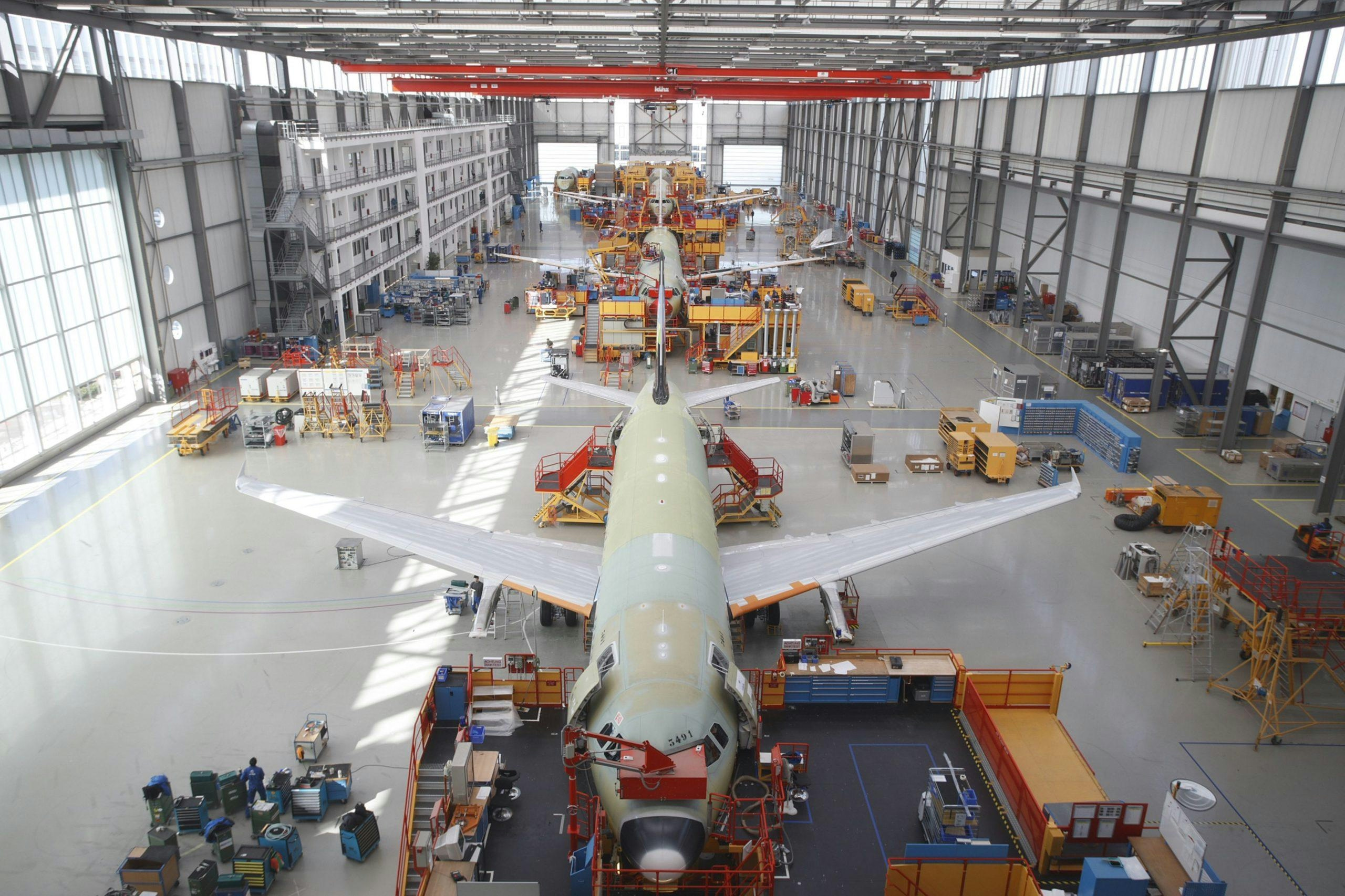
Airbus Employs 3D Printing to Address Aircraft Supply Chain Challenges
Airbus Employs 3D Printing to Address Aircraft Supply Chain Challenges
Adopting Additive Manufacturing Amid Supply Chain Disruptions
Since the onset of the COVID-19 pandemic in 2019, global aircraft manufacturers have grappled with persistent supply chain bottlenecks that have delayed the delivery of critical components and slowed production schedules. In response to these challenges, Airbus has increasingly turned to 3D printing, or additive manufacturing, as a strategic solution to mitigate disruptions and uphold its delivery commitments.
Airbus currently produces over 25,000 flight-ready 3D-printed parts annually, collaborating closely with Minnesota-based technology firm Stratasys. This transition has not only helped alleviate supply chain constraints but has also revolutionized the manufacturing and maintenance processes of modern aircraft. To date, more than 200,000 certified Stratasys polymer parts are in active service across airlines and air forces worldwide.
Benefits and Implementation Across Key Aircraft Models
The integration of 3D-printed components has delivered measurable advantages. For instance, the Airbus A350 long-haul jet has benefited from a 43% reduction in component weight through the use of these parts. Furthermore, Airbus has eliminated minimum order quantity requirements and achieved an 85% reduction in lead times. These improvements have been applied across three major production lines: the A320neo family, the A350, and the A400M military transport aircraft. The parts are manufactured using Stratasys’ industrial-grade printers and Certified Grade (CG) filament, ensuring compliance with stringent aerospace standards.
Serge Senac, Airbus Industrial Leader for Polymer Additive Manufacturing, emphasized the significance of this technology, stating, “Stratasys’ additive manufacturing technology is an integral part of our commitment to safe and sustainable aviation. We can produce certified, repeatable parts faster, with less reliance on complex supply chains. This manufacturing flexibility reduces costs and ensures improved response times to meet the needs of our customers around the world.” Senac also highlighted that 3D printing aligns with Airbus’ ambition to achieve carbon neutrality by 2050.
Ongoing Challenges and Strategic Advantages
Despite these advancements, Airbus continues to confront challenges. Recent quality issues involving metal panels on certain A320 aircraft have exposed ongoing vulnerabilities within the supply chain, contributing to an 11% decline in Airbus shares following the report. These incidents underscore the critical need for continued innovation in manufacturing processes. While competitor Boeing has demonstrated improved performance amid similar supply chain pressures, the adoption of 3D printing may emerge as a key differentiator in the competitive aerospace landscape.
Stratasys underscores that distributed additive manufacturing enables Airbus to produce parts on demand and in proximity to where they are needed, thereby reducing aircraft downtime, minimizing inventory storage, and avoiding costly supply chain delays. The flexibility inherent in 3D printing allows for the production of a diverse range of components, irrespective of type or function, providing Airbus with a strategic advantage as it navigates ongoing industry challenges.
By leveraging 3D printing technology, Airbus aims to mitigate supply chain risks, reduce operational costs, and maintain its leadership position in the aerospace sector amid persistent market pressures and quality concerns.
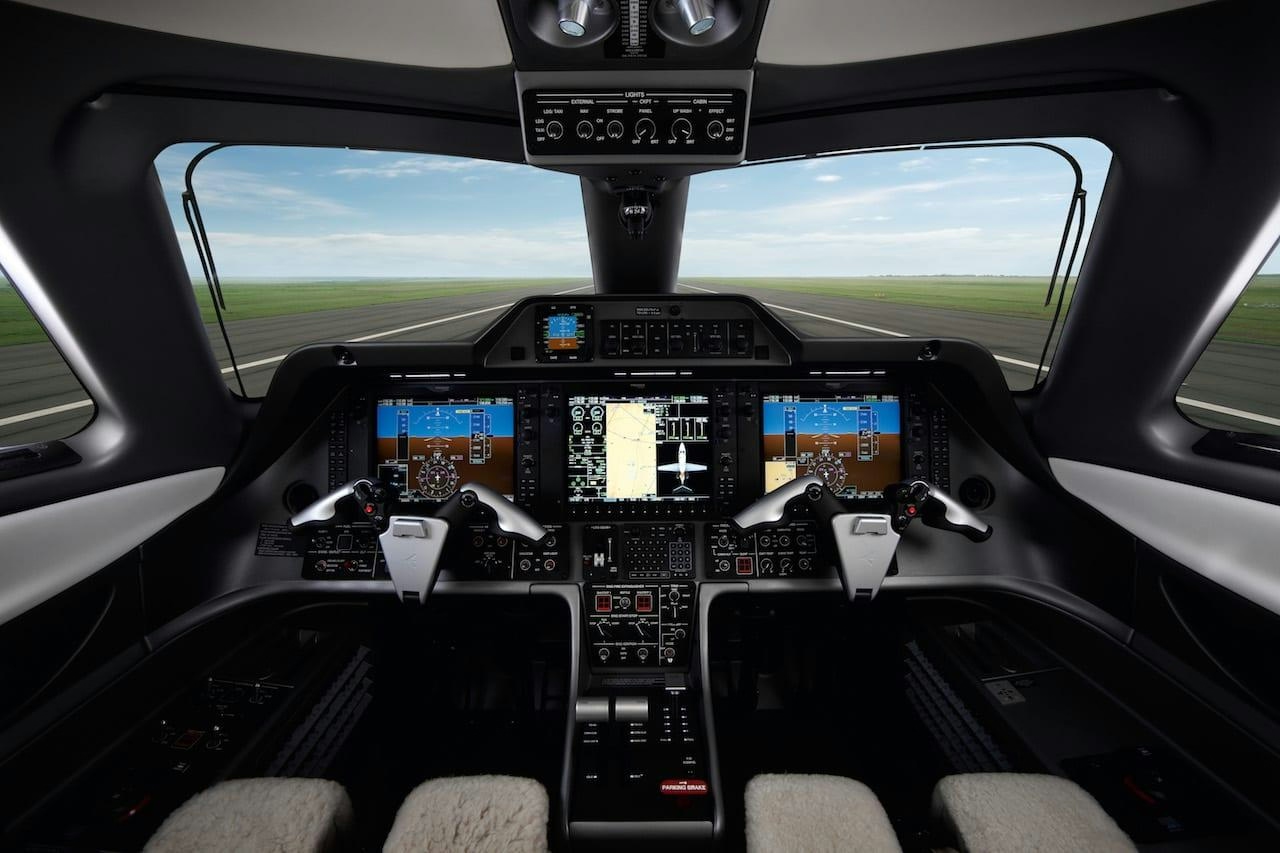
Embraer Unveils AI-Driven Smart Planning Solution
Embraer Launches AI-Powered Smart Planning Solution
**Sao Jose dos Campos, Brazil** – Embraer has introduced Smart Planning, an artificial intelligence-driven platform designed to revolutionize inventory management and supply chain integration within its aircraft manufacturing operations. Developed in collaboration with Aquarela Analytics, this initiative marks a pivotal advancement in Embraer’s digital transformation strategy, aimed at enhancing data-driven decision-making and operational efficiency.
Transforming Supply Chain and Inventory Management
Smart Planning employs sophisticated predictive analytics to optimize inventory levels, streamline procurement processes, and increase supply chain responsiveness. The solution was developed over a ten-month period, during which more than two terabytes of operational data were analyzed. By combining Embraer’s Agile framework with Aquarela Analytics’ Data Culture Methodology, the project advanced from initial data extraction to the deployment of AI models and interactive dashboards that provide real-time insights.
Dimas Tomelin, Embraer’s Vice President of Strategy, Digital and Innovation, underscored the significance of the new tool, describing it as the most advanced data instrument integrated into the company’s processes. He explained that Smart Planning offers an interactive control panel for materials used in aircraft production, enabling the planning team to better manage purchases and stock levels. This enhanced predictability helps mitigate risks associated with material shortages or surpluses through the application of artificial intelligence and forecasting models.
Marcos Santos, CEO of Aquarela Analytics, highlighted the complexity and depth of the collaboration. He noted that the project demanded the full application of their expertise in data analysis, platform development, and AI algorithms to transform and integrate Embraer’s operational systems. Santos emphasized that the scope of the project expanded progressively as complexity increased and results were evaluated at each stage.
Challenges and Industry Implications
While Smart Planning is anticipated to yield substantial benefits—including cost reductions, improved product quality, and strengthened supplier relationships—it also faces significant challenges. Integrating the AI-driven system with Embraer’s existing infrastructure and ensuring compliance with the stringent standards of the aviation industry will be crucial to its successful implementation. The aerospace sector is closely monitoring how this innovation will influence production timelines and operational efficiency, especially as Embraer reaffirms its commitment to meeting 2025 production targets amid ongoing supply chain pressures.
Industry analysts observe that Embraer’s adoption of AI may prompt competitors to accelerate their own investments in similar technologies. Comparable initiatives, such as BOAL Extrusion’s use of AI for operational planning, reflect a broader trend toward digital transformation in aerospace manufacturing. However, the financial implications of deploying such advanced systems continue to attract scrutiny from investors and market experts.
As Embraer expands its digital capabilities, Smart Planning represents a foundational step toward intelligent manufacturing. The company aims to harness artificial intelligence not only to enhance production efficiency and business resilience but also to establish new benchmarks for innovation within the aerospace industry.

Malaysia Aviation Group Announces Long-Term Business Plan
Malaysia Aviation Group Announces Ambitious Five-Year Growth Strategy
Malaysia Aviation Group (MAG) has unveiled its Long-Term Business Plan 3.0 (LTBP3.0), a comprehensive five-year roadmap spanning 2026 to 2030. The plan is designed to enhance the group’s competitive standing and foster sustainable growth across its aviation ecosystem. This new strategy builds upon the successes of LTBP2.0, introduced in 2020 during MAG’s financial restructuring, which notably reduced liabilities by over RM15 billion and eliminated RM10 billion in legacy debt. Since then, the group has recorded its strongest performance in more than a decade.
Progress and Achievements Under LTBP2.0
Since the implementation of LTBP2.0, MAG has achieved three consecutive years of operating profit and two years of positive net income after tax. The group’s Customer Satisfaction Index (CSI) has improved to 84% year-to-date, up from 80% in 2024. Fleet modernization has been a key focus, with the acquisition of 22 next-generation aircraft, alongside route expansion and enhanced customer experience initiatives. Regional connectivity has been strengthened, particularly through Firefly’s jet operations realigned to KLIA Terminal 1 and the introduction of new ASEAN routes.
MAG has also diversified its revenue streams, with non-air revenue now accounting for 18% of total group revenue. This growth is supported by strategic initiatives such as leasing Hangar 4 at Subang Airport to expand maintenance, repair, and overhaul (MRO) capacity. Digital innovation has played a significant role, with the development of an in-house middleware system and AI-powered customer support contributing to a 91% contact centre CSI, the highest among the group’s customer touchpoints.
Datuk Captain Izham Ismail, Group Managing Director of MAG, emphasized the group’s resilience and ambition, stating, “The progress we have made under LTBP2.0 reflects the capability and resilience of our people across the Group, and it gives us the confidence to move into our next chapter with greater ambition. LTBP3.0 marks a shift from stabilisation to scaled and disciplined growth. It sharpens our premium position and deepens the value we create across our broader aviation ecosystem.”
Strategic Objectives and Challenges Ahead
Central to LTBP3.0 is a focused network and fleet strategy aimed at elevating Malaysia Airlines into Skytrax’s Top 10 Global Airlines by 2030, a significant leap from its current ranking of 27. The group targets doubling its topline revenue to over RM24 billion and achieving more than 60% growth in third-party revenue across its aviation services businesses. These ambitious goals are intended to strengthen MAG’s long-term financial resilience and enhance Malaysia’s global connectivity.
However, the group faces critical decisions, particularly regarding the renewal of its widebody fleet, with a final determination expected by early 2026. This decision carries substantial financial and strategic implications and has elicited mixed reactions from the market. Competitors such as AirAsia are simultaneously advancing their fleet expansion plans, including the anticipated delivery of the A321LR in 2026, which may intensify regional competition.
Compounding these challenges is an impending leadership transition, as Datuk Captain Izham Ismail prepares to step down. This change raises questions about operational continuity and investor confidence during the crucial implementation phase of LTBP3.0.
Despite these uncertainties, MAG remains steadfast in its commitment to its long-term vision. Izham remarked, “It is a bold aspiration, perhaps a distant dream to some, but one we are fully committed to realising by building on what we have achieved, accelerating where we are strongest and investing strategically to secure long-term, sustainable value for our customers, partners and the wider nation.”
With LTBP3.0, Malaysia Aviation Group aims to consolidate its position as a leading regional aviation player, navigating industry challenges while capitalizing on emerging opportunities for growth.

From Acquisition to Growth
From Acquisition to Growth
Sharon Green, Chief Executive of Unical Aviation, details how a recent acquisition combined with a pioneering blockchain partnership is reshaping the company’s strategy in aircraft recycling and asset management.
Strategic Expansion Through Acquisition
On September 5, 2024, Unical Aviation completed the acquisition of ecube Solutions, a specialist in aircraft storage, disassembly, and transition services operating across the UK, Spain, and the United States. This strategic acquisition significantly broadens Unical’s presence throughout Europe, the Middle East, and Africa, uniting two complementary capabilities into a consolidated force within the aviation reuse sector. The merged entity is now positioned to lead the industry with innovative initiatives, including A320neo teardowns, while accelerating the global delivery of critical aircraft parts.
This acquisition occurs within a broader context where mergers and acquisitions are actively reshaping various industries, including aviation and insurance. Companies engaged in M&A must navigate a complex environment marked by evolving disclosure requirements, increased oversight of artificial intelligence, and geopolitical uncertainties. At the same time, they must prepare for renewed deal activity and market realignment. The growing role of private equity in M&A is particularly notable, bringing expertise in growth strategies and technology-driven business models. However, as demonstrated by regulatory scrutiny in cases such as Henkel’s attempted acquisition of Liquid Nails and the integration challenges faced by Omnicom and Interpublic, these transactions carry inherent risks. Potential pitfalls include the loss of key personnel, substantial merger-related costs, and intensified regulatory oversight.
Innovation Through Blockchain Integration
In tandem with the acquisition, Unical and ecube have partnered with Block Aero Technologies to register their next 100 aircraft recycling projects under the AFRA CAAC programme, employing blockchain-powered Registry as a Service. This cutting-edge approach generates secure digital product passports for every recovered component, providing unparalleled traceability from disassembly through to reuse in active fleets.
The used serviceable materials (USM) sector has historically grappled with a lack of transparent and verifiable records for aircraft parts. The absence of a universally accessible and tamper-proof digital trail has often resulted in delays, additional inspections, or even abandoned transactions due to trust concerns. These inefficiencies have impeded maintenance schedules, increased costs, and diminished the resale value of valuable components.
Blockchain technology offers a direct solution to these challenges by establishing an immutable, real-time ledger accessible to all stakeholders. This system serves as a trusted source of truth for component provenance, streamlining compliance with Civil Aviation Administration of China (CAAC) regulations, enhancing operational efficiency, and providing customers worldwide with instant visibility into part histories through an open registry portal.
By embedding blockchain technology into its circular economy strategy, Unical is setting a new benchmark for sustainability, transparency, and value recovery in aviation. The integration of secure digital records with physical asset reuse not only bolsters customer confidence and regulatory compliance but also underscores Unical’s commitment to innovation throughout the aviation lifecycle. As M&A activity continues to transform the sector, Unical’s approach exemplifies both the opportunities and complexities companies face when pursuing growth through strategic partnerships and technological advancement.
Ask AeroGenie